グランプリ / First Prize
Selected by Takashi Homma
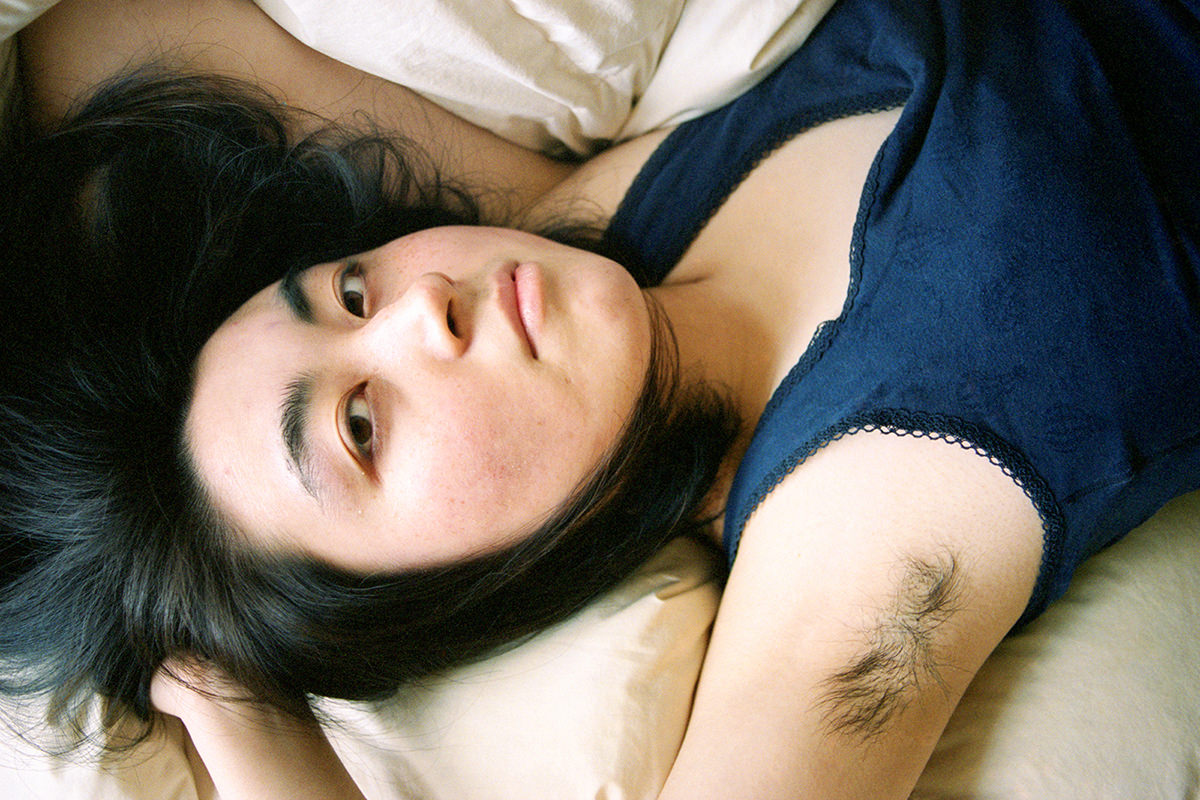
Shiori Akiba
Go GIRL
Statement
The stigma of female body hair. I have been living in Europe for many years. The last time I visited Japan, I noticed that there were way too many ads for permanent hair removal. I was shocked and scared by the pressure from society to remove hair to be feminine. It seemed that everyone was completely missing the point. For whom and what for are you trying to be beautiful? I was pretty concerned that no one seemed to have any problems with it. My sister, who is eleven years younger than me and lives in Japan, is totally different from other girls. She must have reached puberty, but she doesn’t give a shit about what everyone else thinks about body hair. Perhaps, some men might not know this, but some women have hair on the chin. The ideal female image is just a flight of fancy. I love my sister for who she is, and I think she is one of the coolest women on the planet. I hope there will be more cool women in Japan who are happy with who they are.
Judge's comment Takashi Homma
I loved the positive political message of the work.
Winner profile
Shiori Akiba
Born in Hokkaido. Started learning photography in Paris in 2016. Living and working in London since 2018. Her work questions our stereotyped perception of gender roles and how our body images are formed while creating synergy between fashion and fine art.
Related Links
Web: www.shioriakiba.com
Instagram: @shiori_akiba
Selected by Mari Katayama
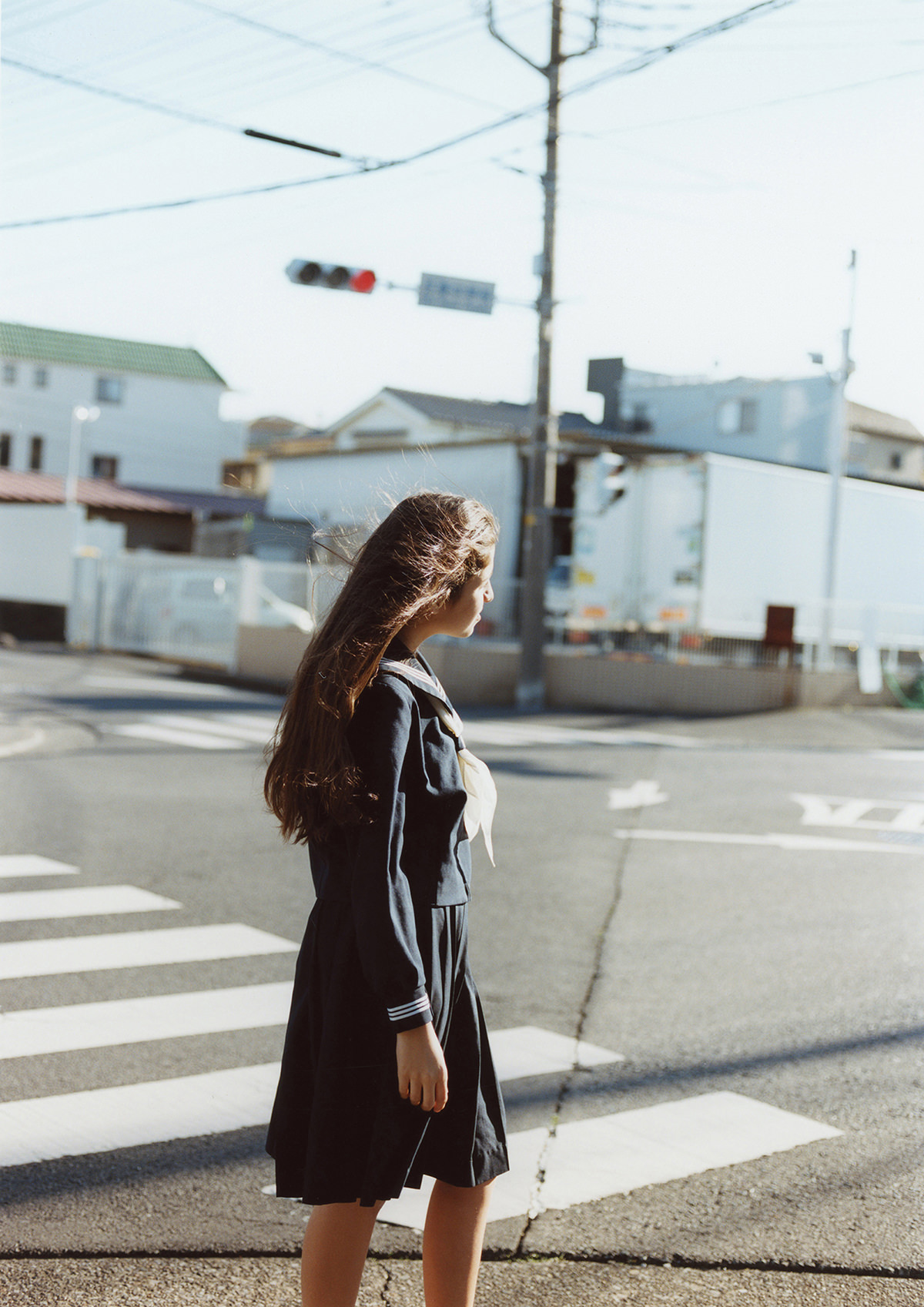
Sachiko Saito
Take Root Here
Statement
There is a Kurdish community of about two thousand people in Kawaguchi City, Saitama Prefecture. Most of them had left Turkey to flee persecution, but so far, no one has been granted refugee status. Japan’s refugee recognition rate is extremely low compared to other countries. The path to settlement is significantly restricted by the country’s refugee and immigration policies; however, the Kurds have already started moving on with their lives here. Many Kurdish men work in demolition to support their families. Although they had arrived in Japan when they were young and have grown up here, the children of the first generation face barriers to education and employment due to their insecure status.
Judge's comment Mari Katayama
I selected her work because I wished her to continue photography. Her image tells the time she spent with her subject, the relationship between the photographer and her subjects, and her attitude towards photography in a very thoughtful way, and I found that beautiful.
Winner profile
Sachiko Saito
Born in 1985. Graduated from the photography department of Nihon University College of Art. Live and work in Tokyo. Her work focuses on how individuals are conditioned by social context. One of the finalists at the 22nd 1-WALL photography competition.
Related Links
Web: sachikosaito.com
Instagram: @komsms
Twitter: @sachikomsms
Selected by Alec Soth
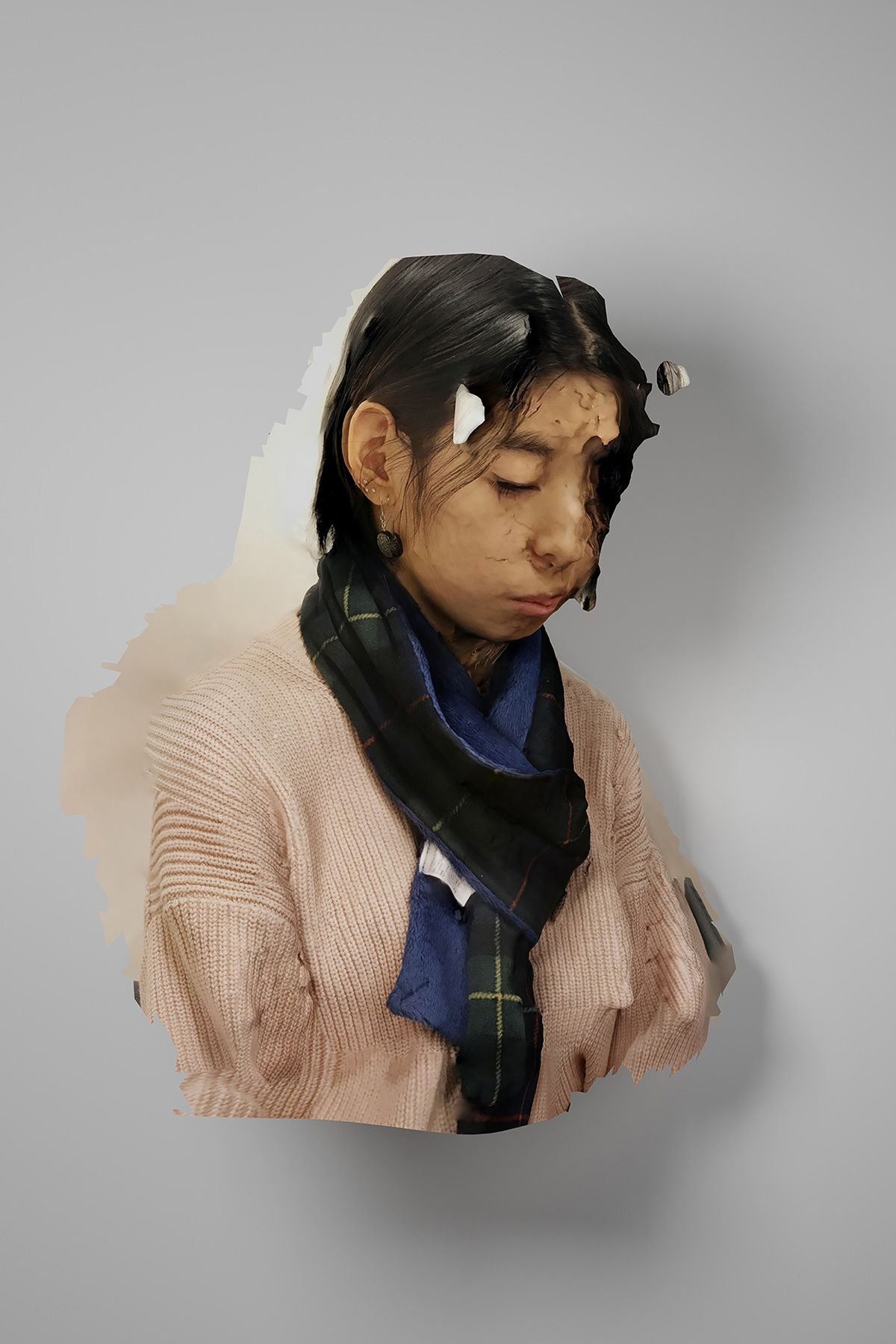
Fuka Nagata
New realism
Statement
This is a new style of portrait photography generated by photogrammetry, which creates the 3D scan of an object using multiple images. In other words, it captures various perspectives into a single image, thus enabling us to see an object as a spatial entity from three-dimensional and multiple perspectives. It is already being used in land survey and architecture as an alternative recording medium to replace photography. The history of photographic techniques can be summarized as the history of visibility. Photogrammetry seems to represent our relentless desire to achieve a higher level of objectivity by integrating different perspectives into one. With this in mind, the errors that occurred in the process seem to highlight the gap between the subject and its representation.
Judge's comment Alec Soth
My personal taste in portraiture is generally quite traditional. I don’t want the technology to get in the way of the portrait. So I was surprised that my favorite portrait submitted used 3D photogrammetry. While this technology is a prominent part of the image, I still found Nagata’s work direct and emotionally powerful.
Winner profile
Fuka Nagata
Born in 1998 in Hamamatsu, Shizuoka prefecture. Interested in the human relationships intermediated by such connections as the internet and cities as well as the mutual communication between technology and human, I create works that internalise the relationship between information and signals which are communicated through such media, the image representations of the past or of distant locations and the human existence as a meta composition.
Related Links
Instagram: @yawn_taro
Twitter: @yantaro_yanyan
Selected by Hellen van Meene

Bian Min
Here Now
Statement
We currently live in Japan as foreign students, but we are not sure where we will be in the future.
Judge's comment Hellen van Meene
When I am a judge for a contest I always try to see if the photographer has more than 1 good image. It can happen that the photographer just made one lucky shot and to find out that the other images dont have the same quality or when you miss their own "language" in the photos.
For me it is important to see if the photographer at least in the other images understands composition, light and framing their work. That the concept of the other photos are in the same line or language of the sequence or a story. Of Course it can happen that 1 or 2 photos in a series are stronger, but in the end I should have the feeling that the photographer understands his language or his journey in his photos.
I chose this photographer, because there is more than 1 good image. I loved the 2 portraits in colour, When we make a portrait of someone we would like to achieve that we the viewer of the photoworks also feel a connection. Even though we are not related to the person in the photo. The photo itself should communicate, by the use of light, the composition and the way the photographer captures the quality of the person in the photo. The girl with the red dress and the pearls all has this quality for me. I am not related but I feel a connection with this photo. It is mysterious and has beautiful light and I am curious and these are for me important values in a portait. This photographer understands what it's about. The other images are also interesting to look at. I would like to nominate this photographer and I hope that the photographer will stay as focused as in these photos.
Winner profile
Bian Min
Born in China. Graduated from the Graduate School of Art and Design at Tama Art University in 2011.
Related Links
Instagram: @bianbiandezuiai
Selected by Yoshiyuki Okumura
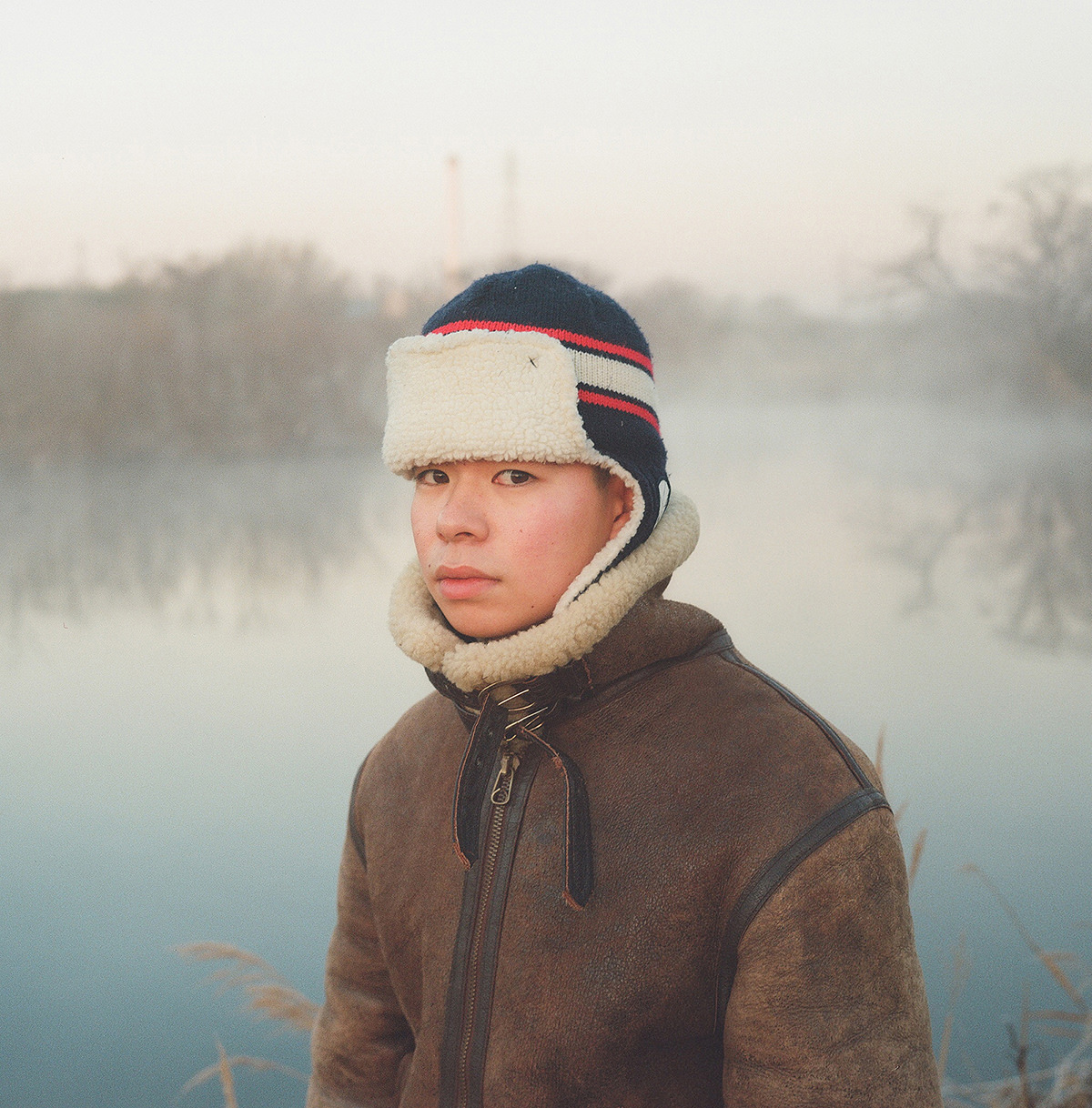
Natsuko Kito
Age of 21, Winter
Statement
Last winter, I wanted to see my boyfriend, who has been my muse and inspiration for a long time, with swans. We were greatly moved by the beauty of the birds we saw together for the first time as we stand in the early morning fog. The air was crisp and clear, with the sun just starting to come up. Our noses turned red, and the finder became foggy from the chill. But I was just so happy to see him there.
Judge's comment Yoshiyuki Okumura
This image recalls the smell of fresh air, the coolness of the kiss of the wind on the cheek, and a place where grass and leaves make the soothing rustling sound when you walk on them. Inspiring images like this remind me that one of the beauties of photography is being able to capture the ephemerality of a moment.
Her image leaves just enough room for imagination. It really makes me think about the photographer herself, the subject, and the place.
Although there is nothing new, her photography is honest, simple, and direct, and I think this makes her work very unique and personal.
Winner profile
Natsuko Kito
Born in 1992 in Kyoto. Studied traditional Japanese painting at the Department of Fine Arts Education at Nara University of Education. Winner of a Grand Prix at the portrait category, IMA next CONTEST in 2019. Currently based in Tokyo, working in a variety of medium, including film stills.
Related Links
Web: kitonatsuko.com
Web: Gemini Films
Instagram: @ktntk02
入賞者 / Shortlist
-
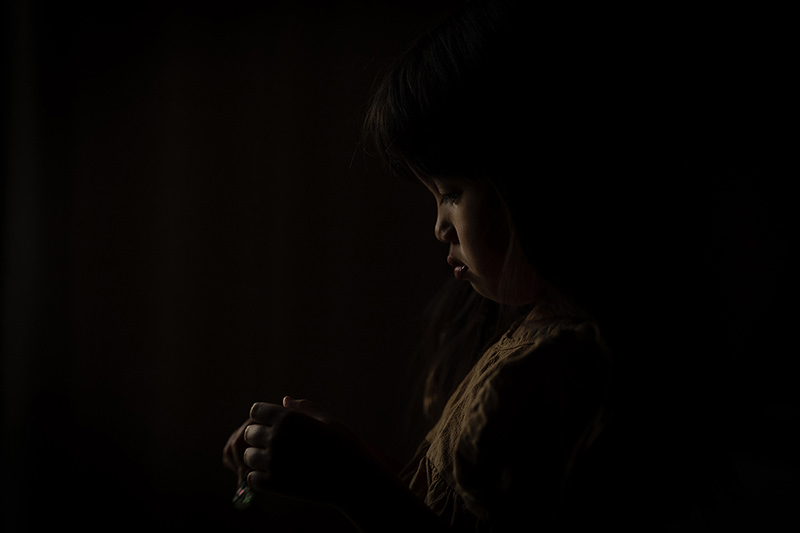
Kayoko Shibata
a girlREAD MORE
Kayoko Shibata
a girlEverything was more fun and exciting when I was a child. Now we don’t have the freedom to travel to see friends and family. We can’t even talk to each other freely without wearing masks. We have been living under so many pandemic restrictions. Still, today's children seem to be adaptable, resilient, and full of energy, even though they may have an internalized sense of loneliness. I hope that all children will continue to live life to the fullest.
-
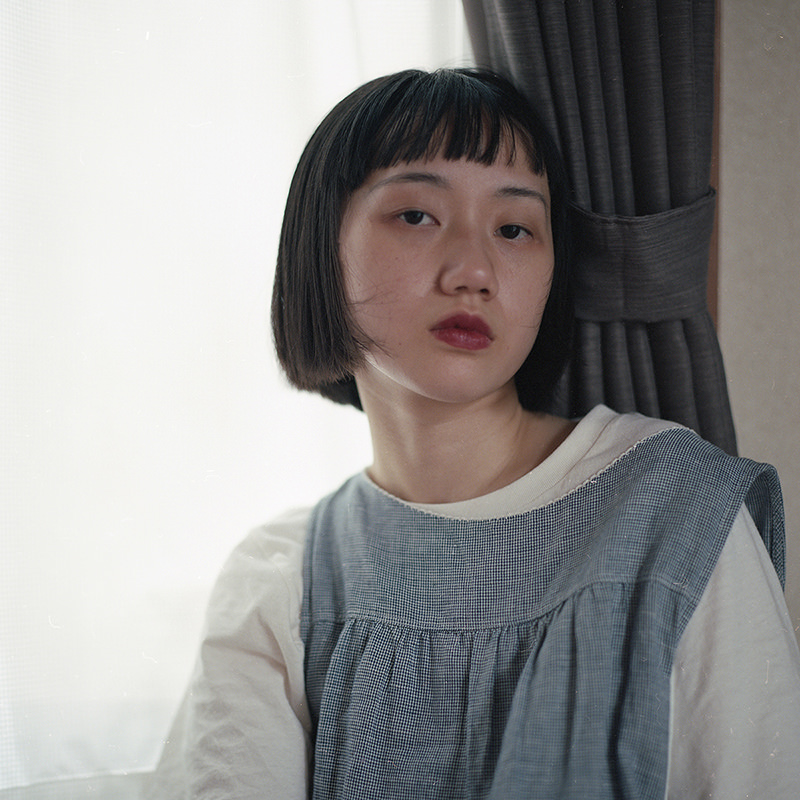
Joan Zhang
The Taste of a MandarinREAD MORE
Joan Zhang
The Taste of a MandarinMy subjects are my friends who are the same age as me. It feels like the camera became my mirror, and my friends became mirror images of myself. Others become mirror images of self. We watch others, and at the same time, we are being watched by them.
-
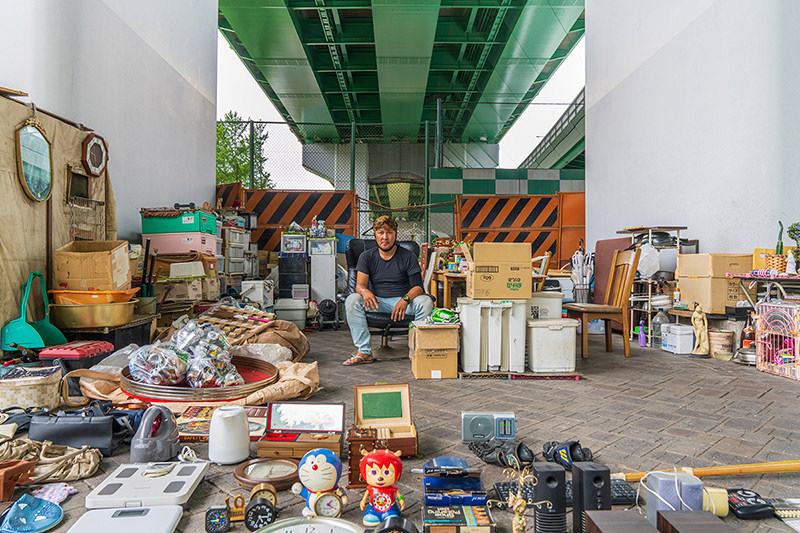
Taisuke Sato
The Street Life StyleREAD MORE
Taisuke Sato
The Street Life StyleThere are people who are homeless. To some, they are a source of disgust, a social problem to be removed from society. I sometimes think I might become one of them one day, especially when I am consumed by the feeling of loneliness and disconnection of today's world. I observed how they go about their lives, and noticed that, in today’s Nagoya, the only difference between them and us is that they don’t have an address. They work around the clock and calendar to collect and sell discarded cans and other scrap to earn a living. It’s just something went wrong and prevented them from fitting in with society’s norms. Some people adapt to homelessness as a way of life, and I endeavor to capture their lives and humanity.
-
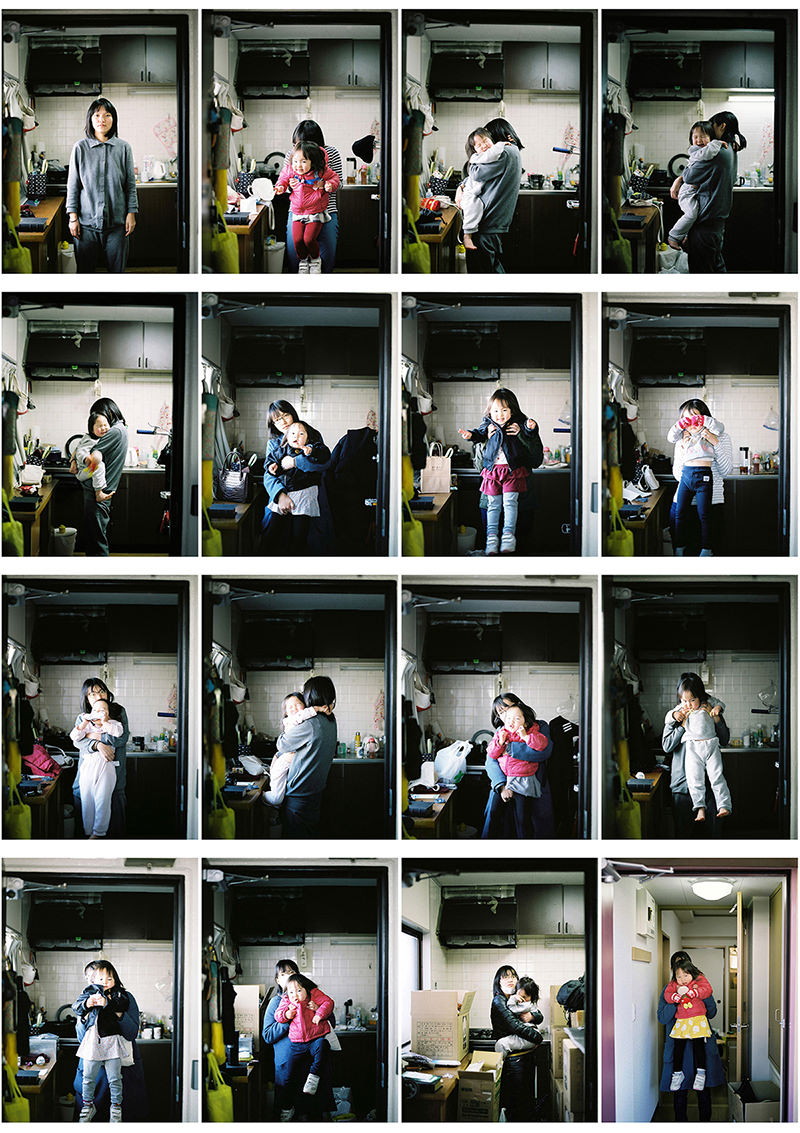
Goro Kosaka
chikageREAD MORE
Goro Kosaka
chikageIn September 2017, I started photographing my wife and daughter every morning when I left home for work. For this ongoing series, I use a 645 format camera and arrange 16 images on a roll of film like a contact sheet. I selected works from 2020 for this occasion.
These pictures are a visual record of my daughter’s and my family’s lives during this period. They are very ordinary, family photographs in a traditional sense.
It was by pure coincidence that my family started a new life in a new environment in February 2020. After that, the world has changed before our eyes. But for good or for worse, our lives have remained more or less the same.
The title is taken from my daughter’s name. I hope thousands of moments in our lives may bring me a lot of realization in life. -

SHUYA HARANO
Girls...READ MORE
SHUYA HARANO
Girls...I think a portrait captures the subject’s true essence through their physical appearance, facial expressions, and gestures in their everyday surroundings. The concept of this image is to capture people's daily lives with a bit of emphasis on their natural appearance. Most of the subjects are people I know. I just pressed the shutter when I saw the best qualities of the person or when I was attracted by the look on their faces through the lens of myself. Then I added a little emphasis to highlight what I saw. Personally, I think I succeeded in letting the subject’s personality really shine through in each of the images.
-
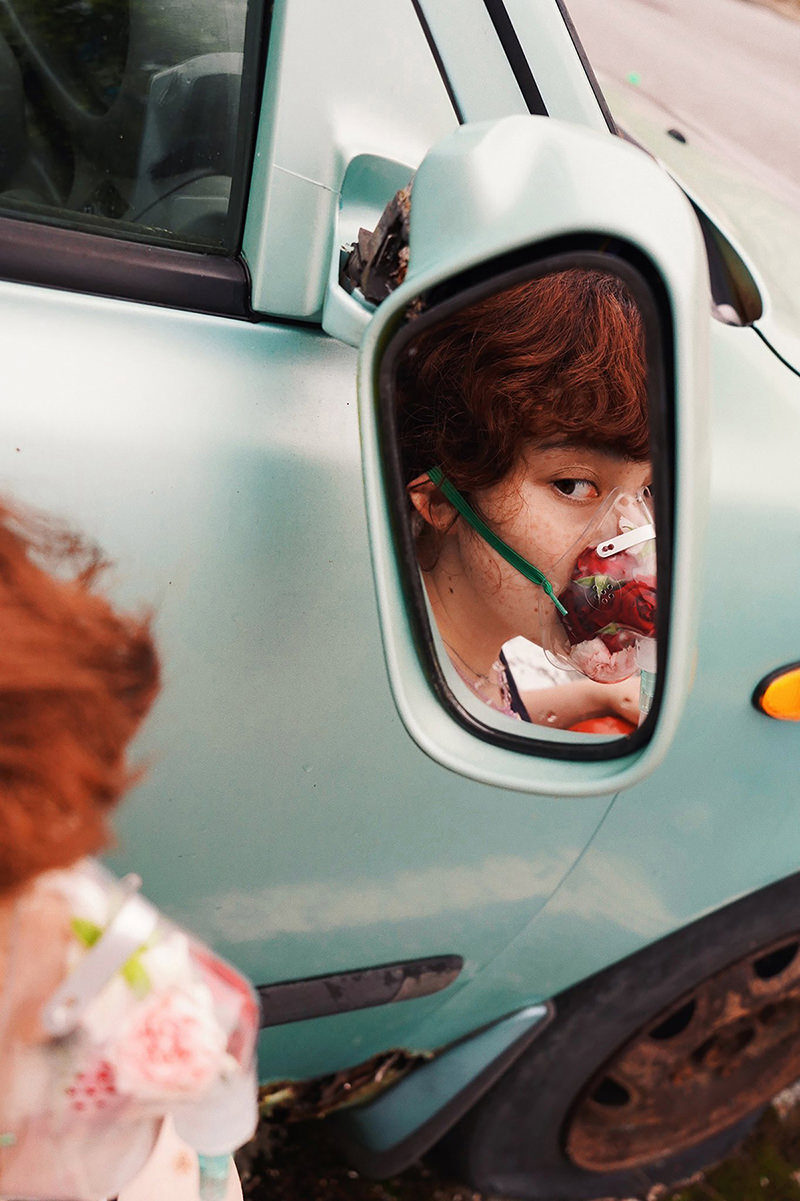
Anna Manabe
A Need to BreatheREAD MORE
Anna Manabe
A Need to BreatheI am an ainoko (“hybrid”), hāfu (“half”), konketsuji (“mixed-blood child”). This is the very country where she and I both live and breathe. I have suffered immeasurable hurt because of what I feel inside and what surfaces to my physical appearance as a mixed-race individual. However, regardless of my knowledge of who or what I am, I know that I belong in this country just like everybody else does. To perceive my reflection in the mirror as the image of “me in Japan”; to remember that breathing—no matter how suffocating it may be at times—in this country is a beautiful act in itself and that I have a reason to be proud—these were the themes I had in mind when I took the photographs. I am hoping for the arrival of the time when we’ll take off our masks; when we won’t have to worry about the reflection in the mirror; when we’ll walk this beautiful country as our beautiful selves.
-
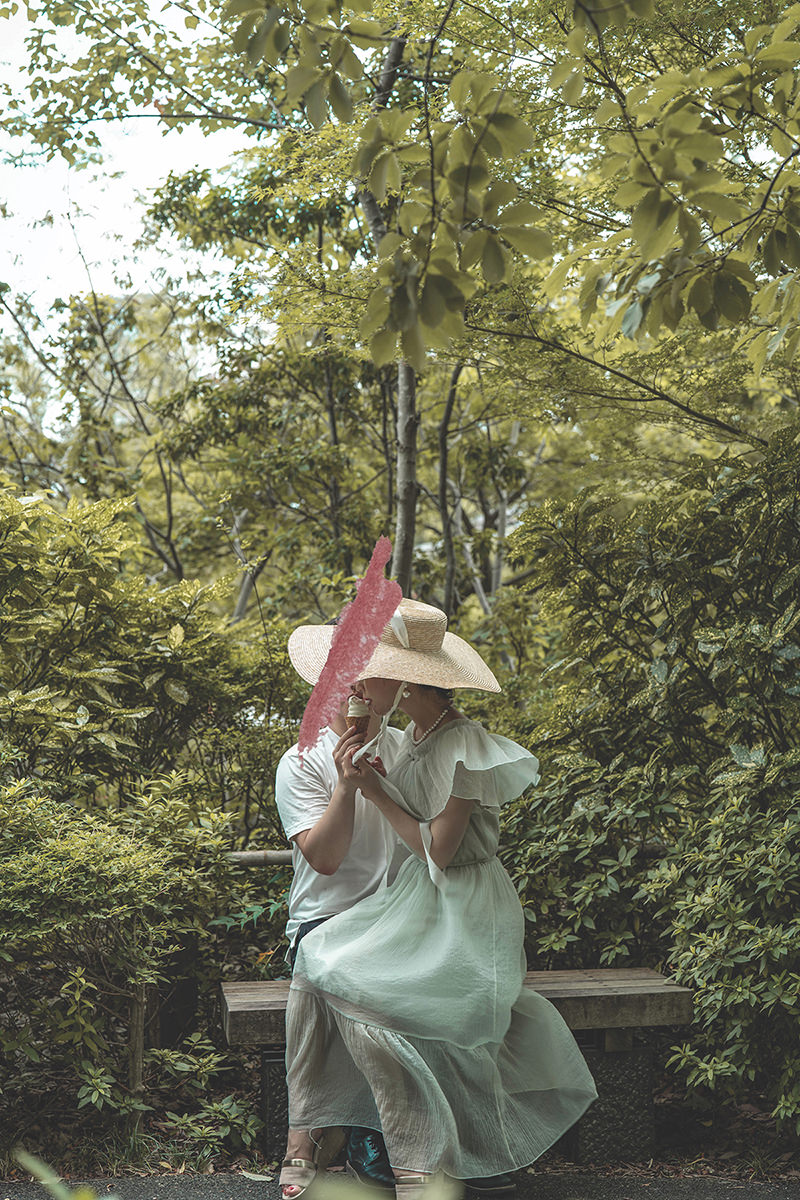
Emma Anna-Claire Suga
LOVELESS T.T.READ MORE
Emma Anna-Claire Suga
LOVELESS T.T.Moving from Japan to France amid Covid pandemic, and exhibiting works in France and in Europe as a "Japanese self portrait Artist" since 2021.
Wherever I go, wherever I will be in the world, during crises or in peace time, I will continue to express the response of myself, to the events that the world brings to us. -
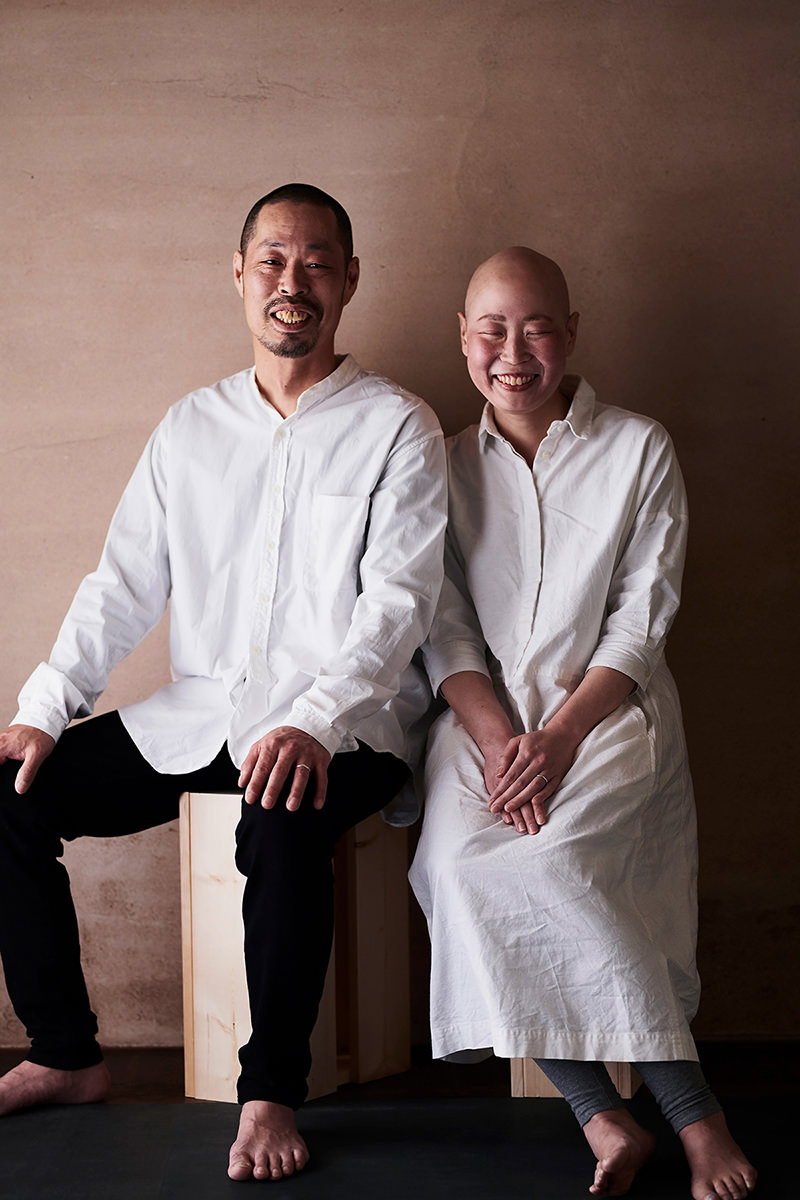
Junichi Miyazaki
Mr. and Mrs. NREAD MORE
Junichi Miyazaki
Mr. and Mrs. NI run a photo studio in a renovated old Japanese-style house. Coming face to face with the surrounding dim light of dusk, shadows, and tranquility, I encounter an emerging portrait; I value the time I spend on photography.
Mr. and Mrs. N were my customers at the studio. Soon after their marriage, the wife was diagnosed with breast cancer. During her chemotherapy, the husband, who had provided support throughout the process, suggested they have their photograph taken. Yes. Let’s have our photo taken. I was thinking the same, she had said then, the couple told me. They emitted an aura of warmth that seemed to envelop one another in the studio on the day of the shoot. The pureness of the “now” they had reached together transferred onto me. I continued to release the shutter while being in sync with the couple’s state of mind, which then gave rise to photographs that looked as if they were the couple’s self-portraits. -
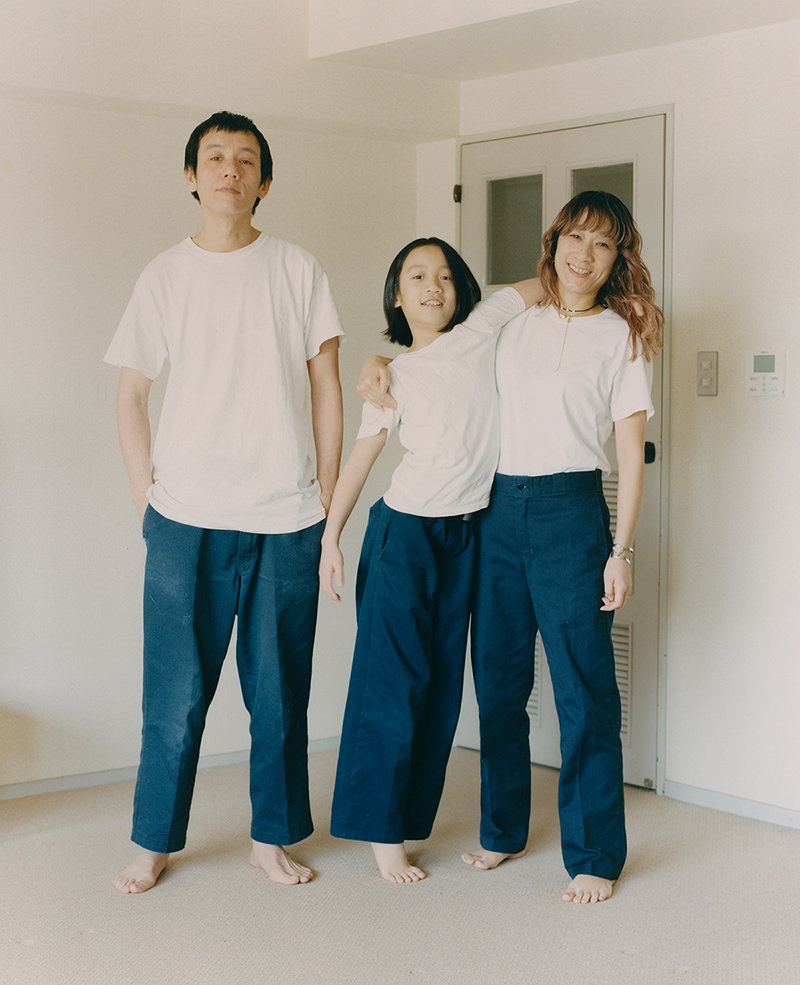
Teruo Horikoshi
FOLLOW-UPREAD MORE
Teruo Horikoshi
FOLLOW-UPHome is a space that relaxes you more than any other. He is a skateboarder. As I was advancing the film, he began playing with the skateboard without wheels—perhaps an influence from his father who is also a skateboarder. Maybe that’s how he always plays with his father. A moment like this provides me with excitement and refreshment as I only get to see them once in a while, but then again, it may just be a day-to-day occurrence for the family. I want to capture such moments of life.
-
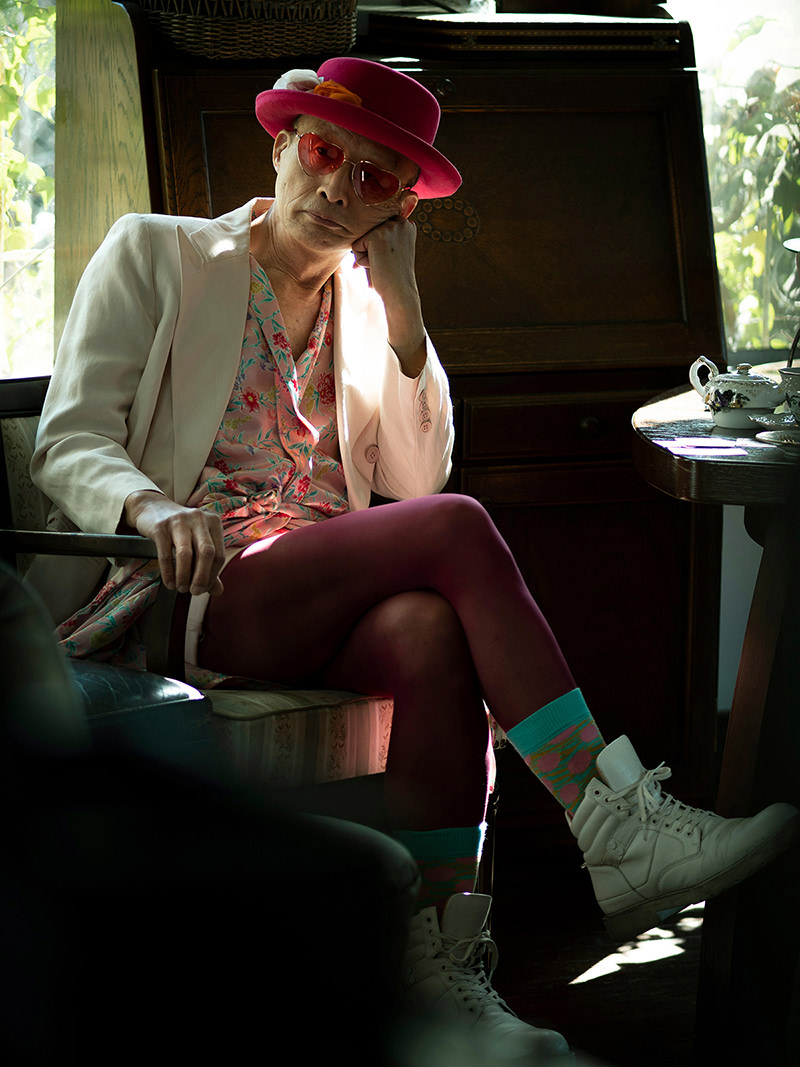
Takako Ugachi
Powerful Colorful AgedREAD MORE
Takako Ugachi
Powerful Colorful AgedI photographed my friend who is always stylish, always enjoying life. I wanted to break down the stereotype of getting old by photographing the friend who is full of life at all times and unafraid to tackle his newfound passion.
-
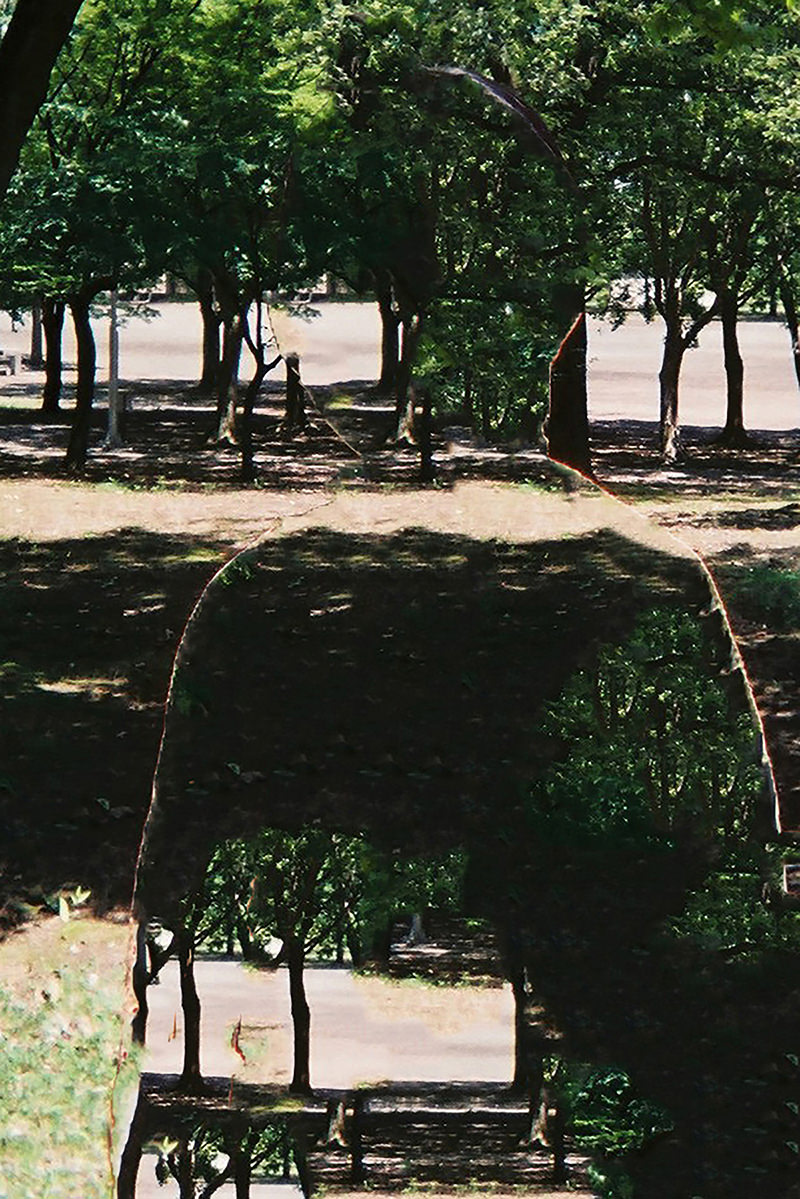
Jun Iizuka
usREAD MORE
Jun Iizuka
usA portrait of the modern age, blending into a centralized landscape and living across real and virtual realities. It is not transparent, but opaque, and AI has generated an image that only a human image can assimilate into the background landscape.A portrait of the modern age, blending into a centralized landscape and living across real and virtual realities. It is not transparent, but opaque, and AI has generated an image that only a human image can assimilate into the background landscape.
-
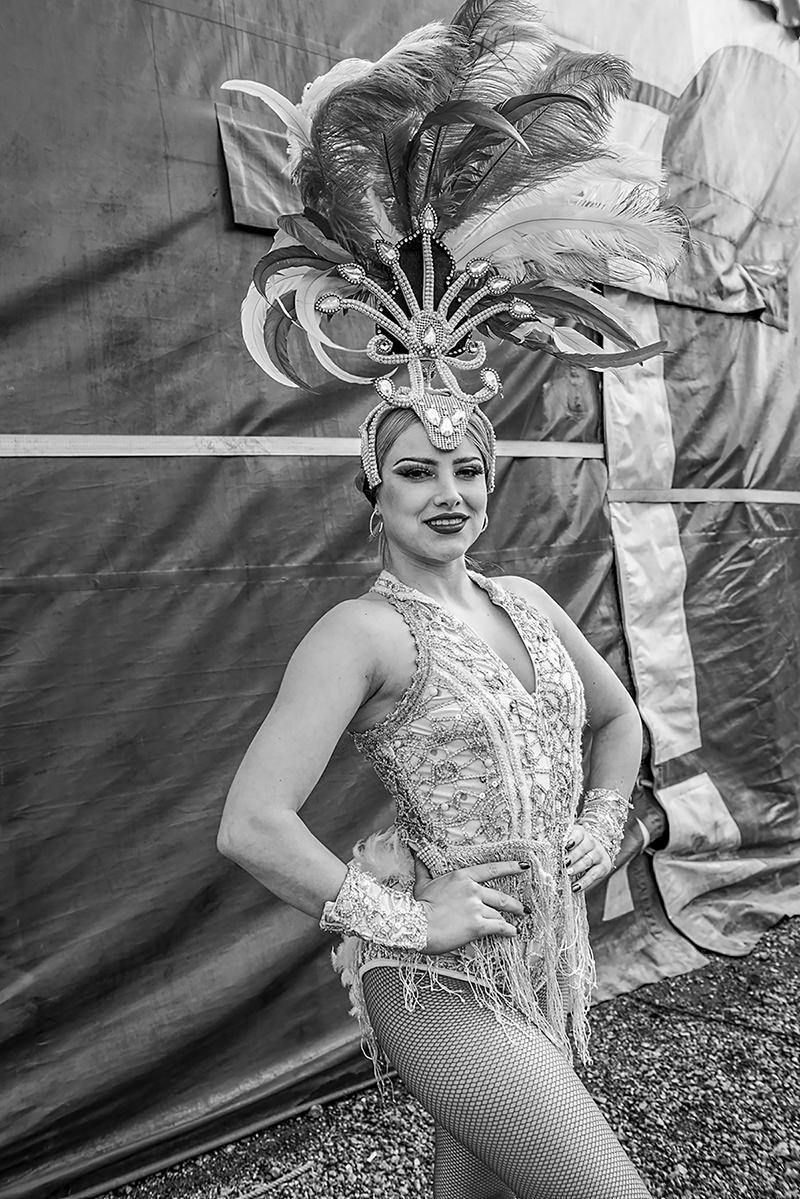
Atsuhiro Kajihara
HAPPY DREAMREAD MORE
Atsuhiro Kajihara
HAPPY DREAMHere we see a member of a circus that gives performances mainly in western Japan. An organic portrait series devoid of artifice.
-
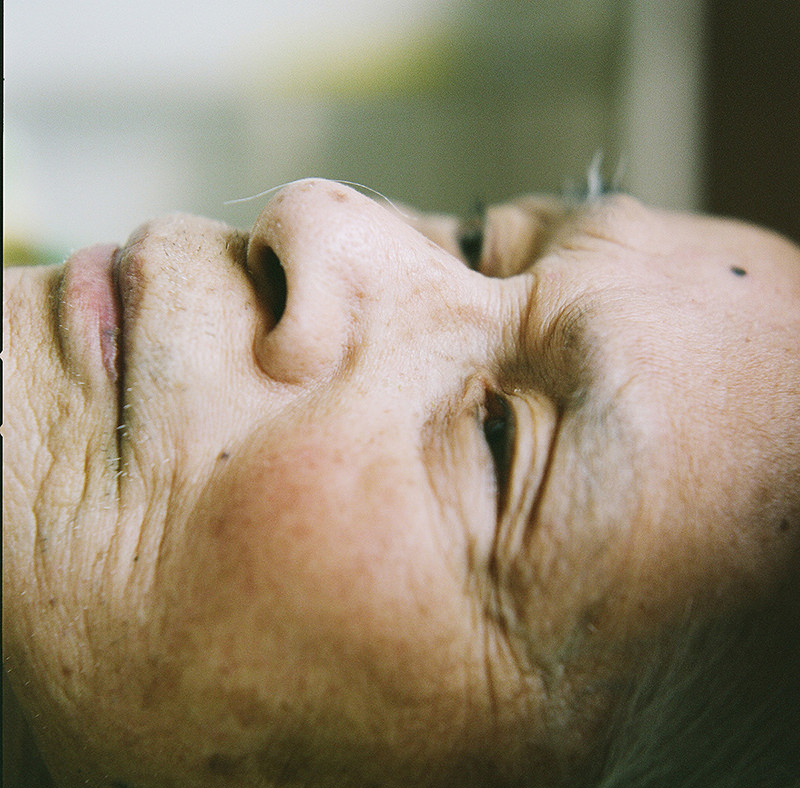
Hisaya Katagami
Father of dementiaREAD MORE
Hisaya Katagami
Father of dementiaOne day, my father was diagnosed with dementia. When I first heard the news, I didn’t feel anything in particular. And that sums up the relationship I have with my father. I pay a visit to the facility he is in, but unable to strike up a conversation with my senile father, I give a shot at photographing him. Having nothing much else to do, that is all I am doing—photographing my father. I am documenting my father who has lost his memory.
-
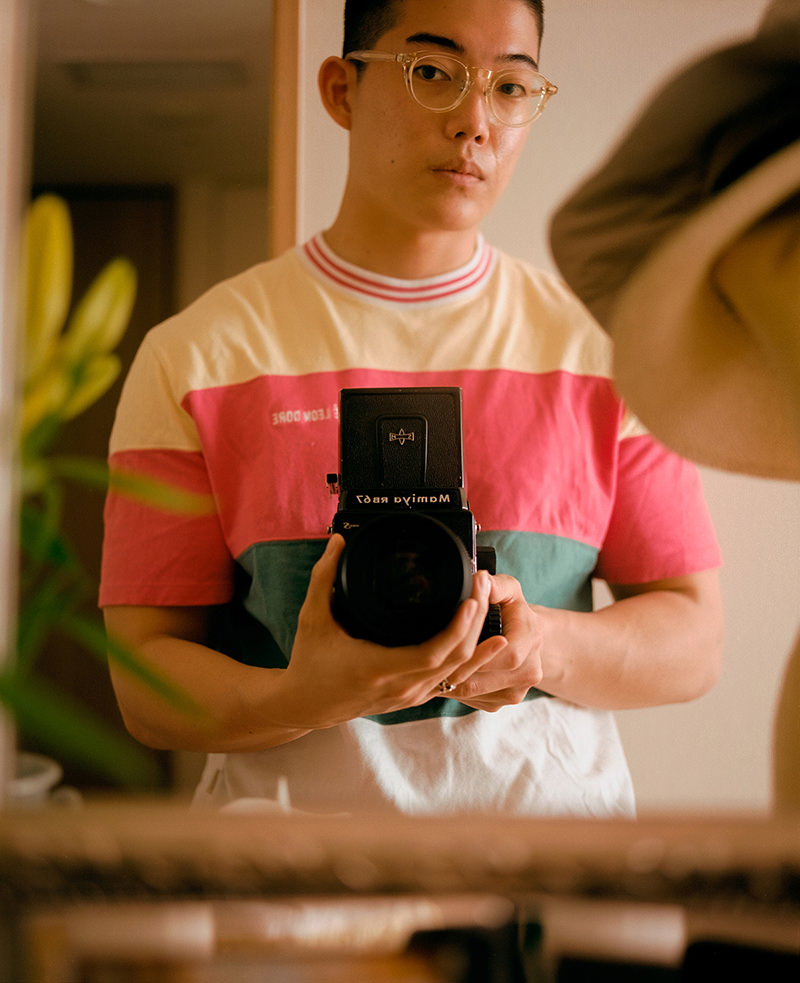
Dai Asano
Ego DissolutionREAD MORE
Dai Asano
Ego DissolutionThe five photographs I have submitted are a series of self-portraits taken via the use of a mirror and a cable release; in the photographs taken using the release cable, I captured an otherwise unseeable image of myself; those photographed in the mirror depict me facing myself.
In the midst of the societal changes caused by Covid-19, I have had an unprecedented amount of time to face my inner self. And with this process, I feel I was able to realize that I had long been measuring my self-worth by the opinions of others or other people's standards of success. These self-portraits represent the process of the acknowledgment of and facing up to such aspects of myself. -

Yumiko Utsu
safe portraitREAD MORE
Yumiko Utsu
safe portraitI am currently in the middle of a divorce trial with my husband. He says he will give me child custody and agree to the divorce on the condition that I never release the photos of our children. It has been 25 years since I first started taking photographs at the age of 17 and 10 years since the birth of my children—I cannot forsake capturing the subjects closest and dearest to me. My love for them is endless; I wish to share these comical photographs I take of them with a broader audience. The photo sessions are a joyous occasion for the children as well. There are widespread talks about the dangers of sharing children's images but not so much about the enthusiasm. My goal as a parent is to explore the possibilities of this expression safely and responsibly.
-
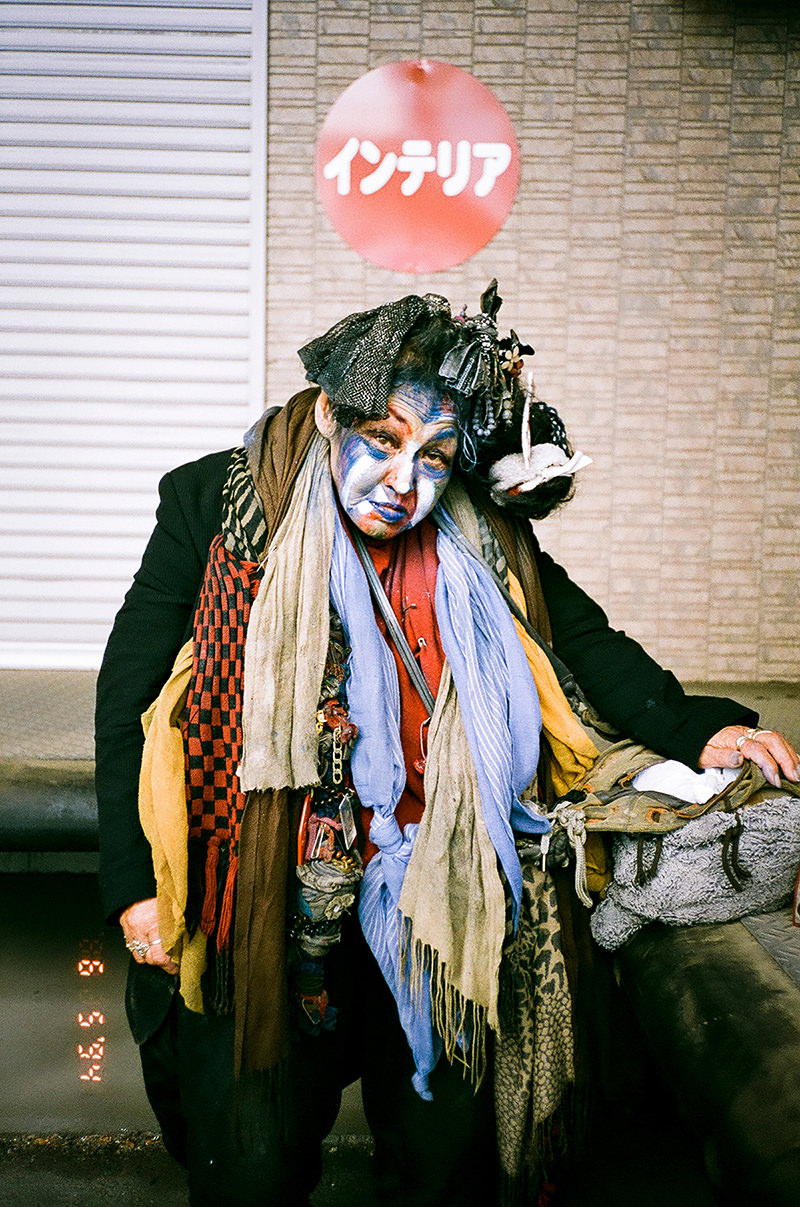
Satoru Koyama
The Cool LumpenREAD MORE
Satoru Koyama
The Cool LumpenThe 80-year-old woman (according to her) who spends most of her day sleeping and mumbling to herself goes by the name Suri. Her background is unknown, but she is currently a lumpen—homeless—woman living under a railroad bridge located in the outskirts of Tokyo. Our intermittent friendship began a few years back on my first sighting of the woman that piqued my curiosity; for reasons unclear to me, I was drawn to her looks and presence, which arguably leave a lasting impression to anyone who lays their eyes on her. Every day she spends gazing at the same scenery while smoking a cigarette, occasionally getting pecked by a pigeon or sparrow. On one of those days, she said to me, “May you have a wonderful day tomorrow.”
-
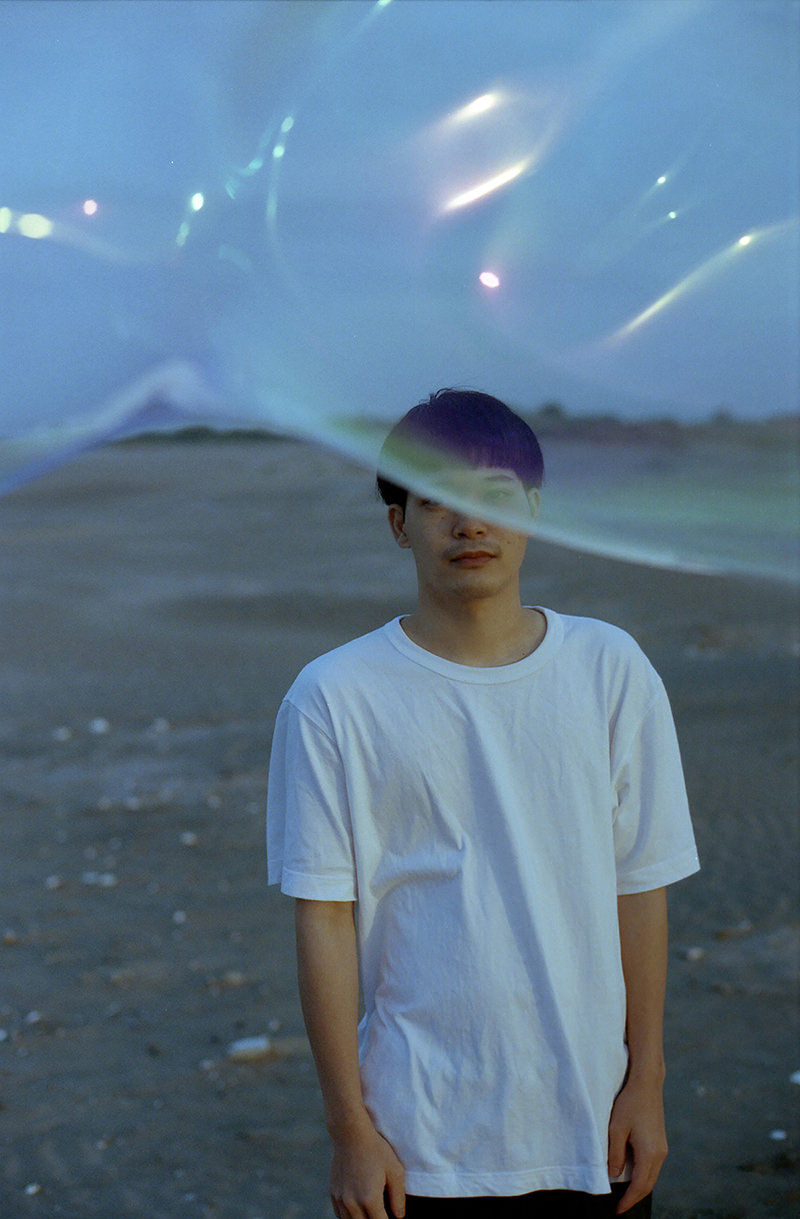
Yuya Tamagawa
SEiREAD MORE
Yuya Tamagawa
SEiThese are photographs of a person I admire. They were taken during the time we spent together in Tokyo.
-
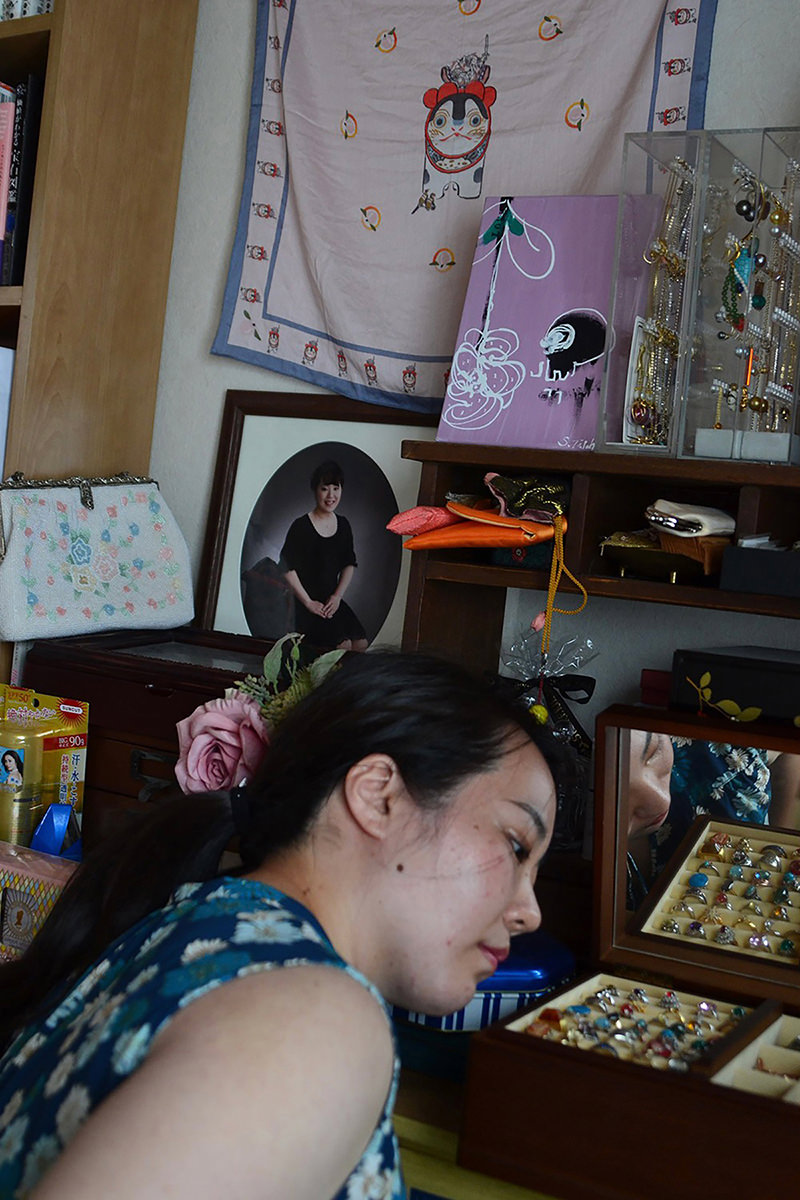
mikya craft (red and softy)
Getting ReadyREAD MORE
mikya craft (red and softy)
Getting ReadyThis work depicts a room and its inhabitant, a modern woman who cannot afford a proper dresser. I submit the portrait of this woman in the form of photographs that reveal her belongings and residence, which are an extension of the body.
-
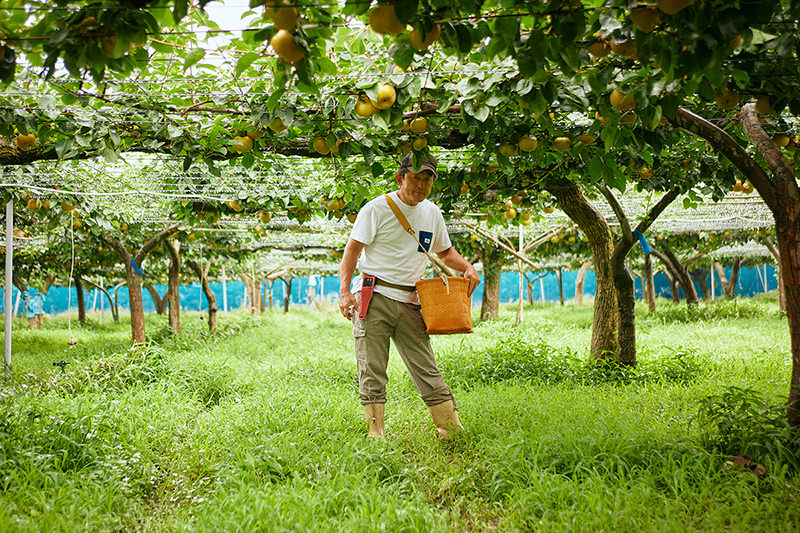
Junya Takatsu
FoundationREAD MORE
Junya Takatsu
FoundationWithout our ancestors, Japan as we know it today wouldn’t exist. And without food, they would have starved to death. It is our agriculture and livestock producers who have been there to support us throughout time.
Despite the exponential boom of the agricultural and livestock industry as well as the encouragement of local production for local consumption across the nation, we see a decline in the number of agricultural workers each year.
The reason?—there is simply a lack of visibility of the foundation; the foundation of this country's prosperity and survival. I communicated with the producers of the field and captured the small moments that revealed them at their most natural state. -

Mei Hattori
GOATREAD MORE
Mei Hattori
GOATThe year 2020. Our daily lives turned into something not-so-everyday. The same year, a goat that I share my name with has been shipped.
Think of the English word “livestock.” Stock—as in merchandise—that is alive.
We live in the same world, and they are the ones that keep us alive.
They were carrying out their day-to-day lives just like any other day. It was a peaceful, radiant sight. -
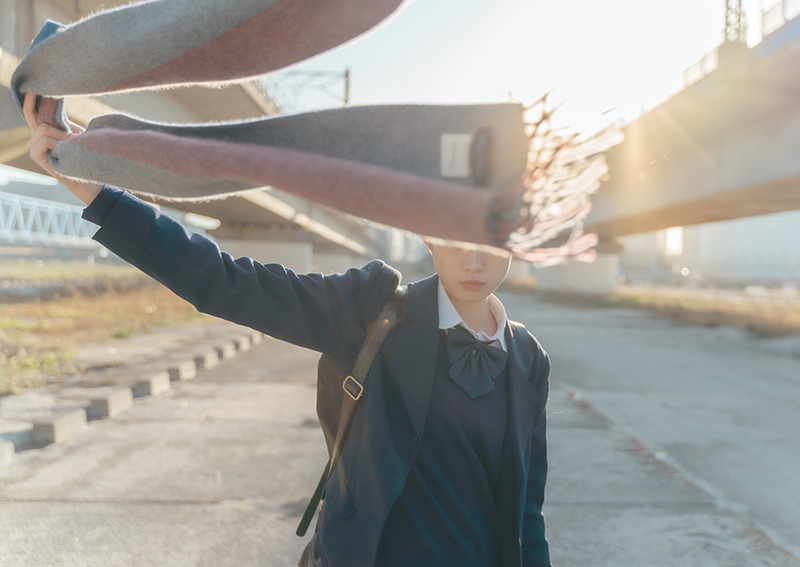
Takatoshi Miya
GoodbyeREAD MORE
Takatoshi Miya
GoodbyeThe subject was in her final year of highschool at the time, three months left till graduation. This is a record of the subject in the uniform that she’ll soon no longer wear captured on the banks of the Tama River, which has since been renovated out of its desolate state.
-
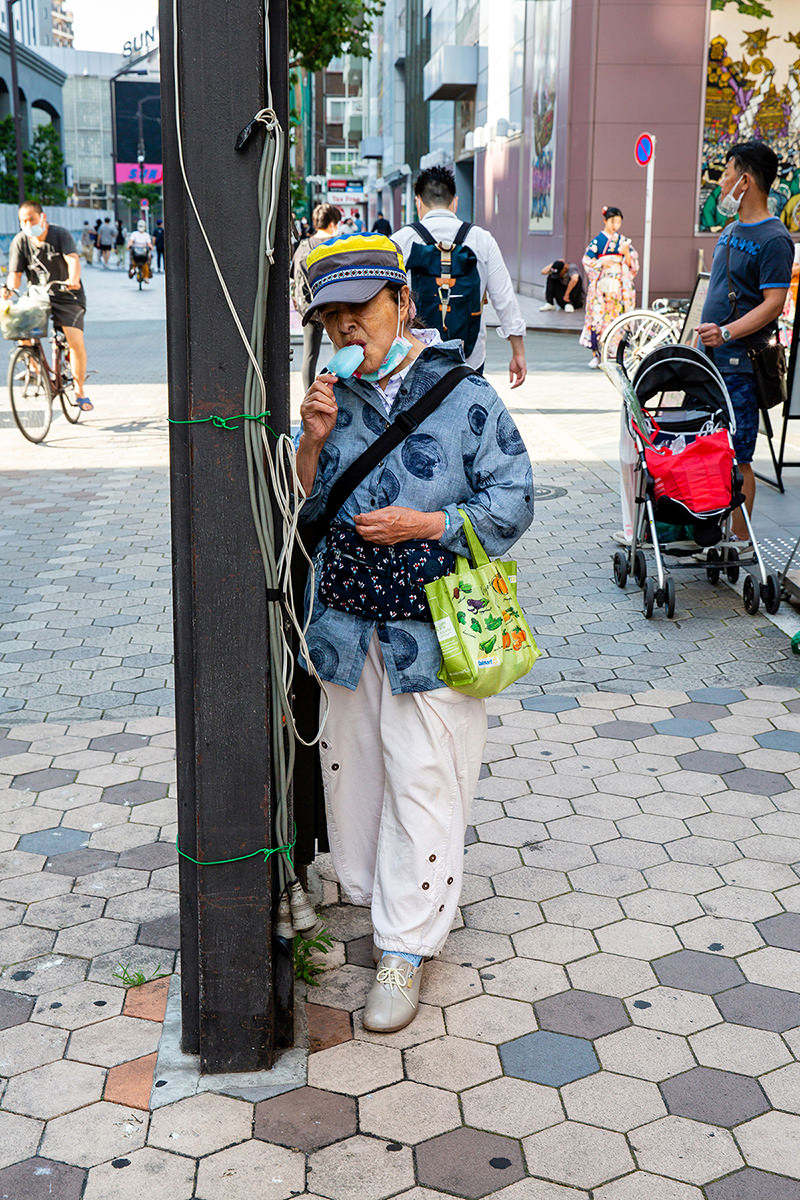
Daichi Ito
Ice Ice BabyREAD MORE
Daichi Ito
Ice Ice BabyIt was around 30 degrees Celsius (86 degrees Fahrenheit) that day, despite it still being June. I was visiting a shitamachi district of Tokyo. There, I came across a woman eating an ice cream bar alone. The sky blue ice cream bar struck me as a deliberate choice she’d made to match the blue tone of her outfit. I felt a sense of harmony and inevitability between her and the ice cream.
And it was no vanilla ice cream, but the sight made me feel like I heard the hit song Ice Ice Baby by Vanilla Ice playing somewhere -
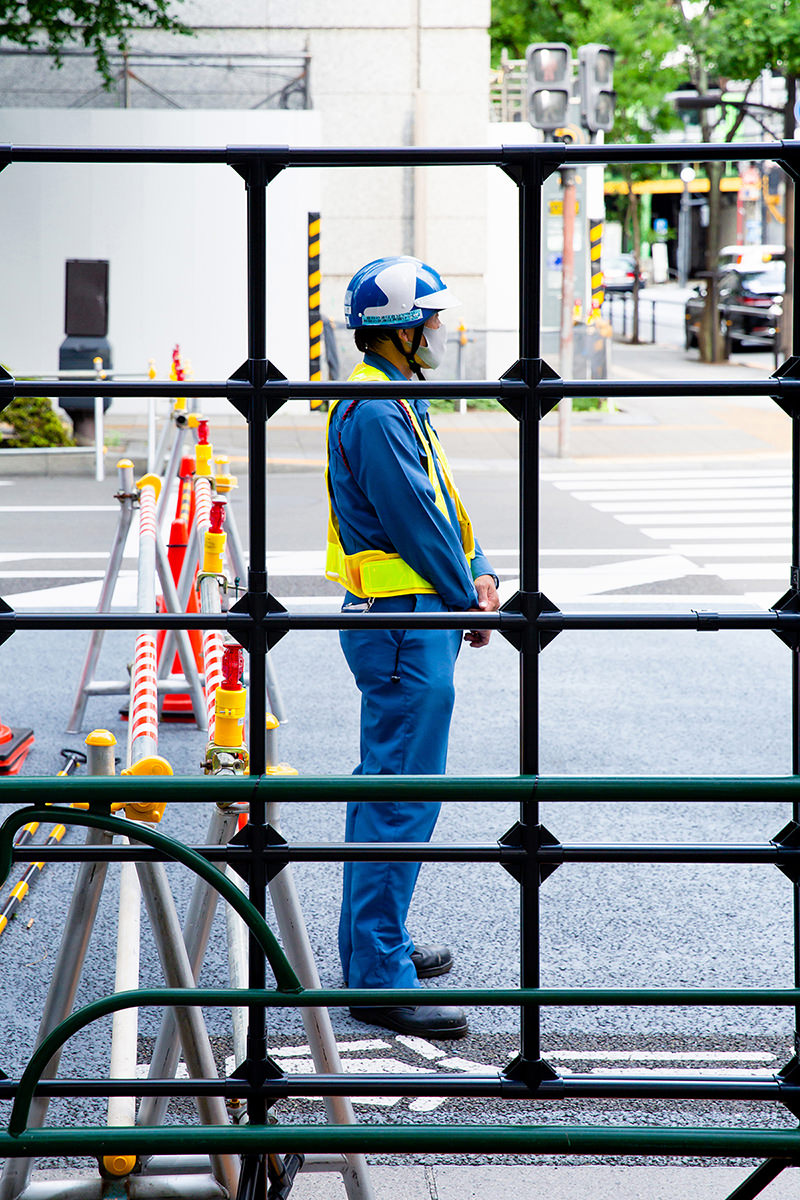
Daichi Ito
TokyoREAD MORE
Daichi Ito
TokyoFor the past couple of years, the city has been undergoing major changes in preparation for the Tokyo Olympics. This must be a familiar scenery to those who are in Tokyo.
The sight of anyone serious at their work warrants admiration. I saw light emanating from the man standing on the other side of the fence. -
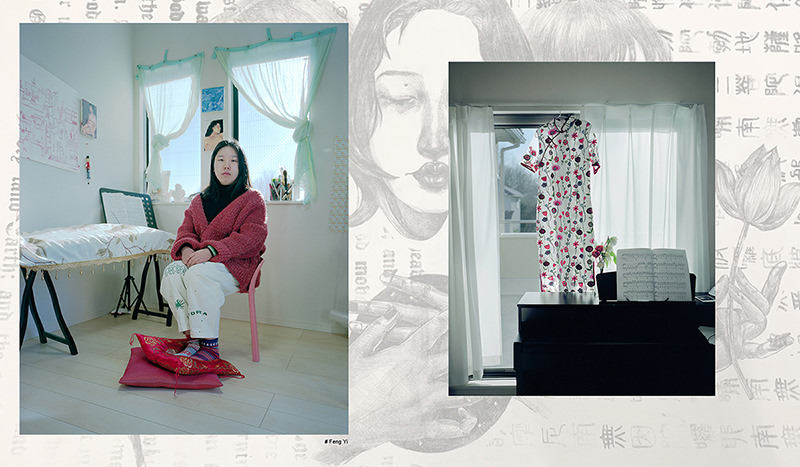
Wang Lu
Now the memories beginREAD MORE
Wang Lu
Now the memories beginThroughout history, Japan and China have been closely intertwined in countless ways, and since China’s study abroad boom in the late 1990s, more than 900,000 Chinese have moved to Japan to date. Going on the fourth year since my arrival in Japan, I have become aware that my thought process has been increasingly influenced by Japanese norms. The same could be said of other long-term Chinese residents in Japan, which then indicates the influence the Chinese have had on Japan. Based on this premise, I began a project in which I use a large format camera to explore the lifestyles of the Chinese residents via their homes. It concerns the topics of how culture moves through time and space and how it has manifested itself in the present; and how place affects personal identity.
-
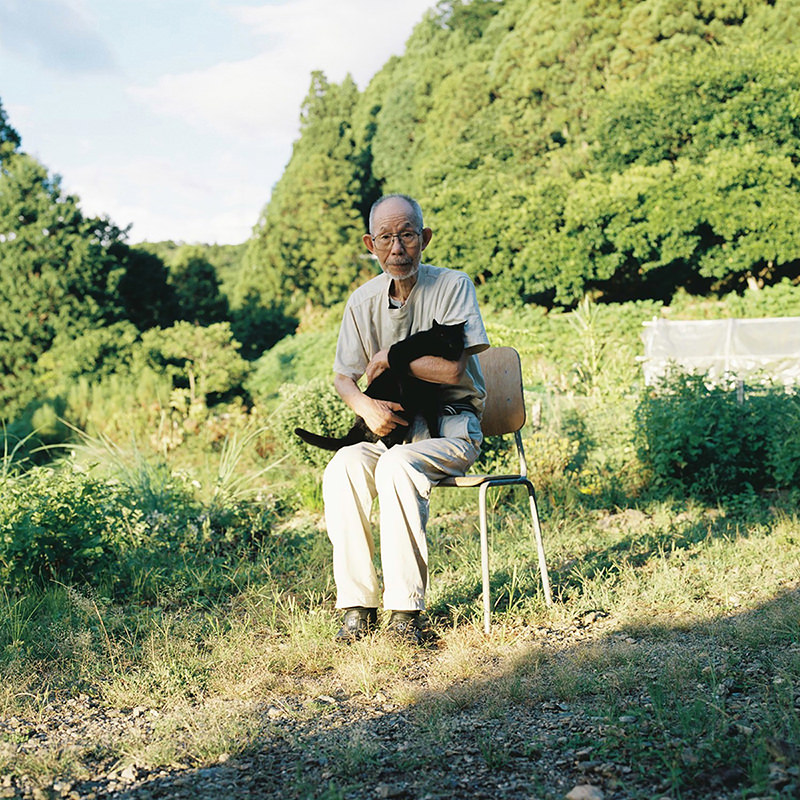
Mile Nagaoka
now/here -
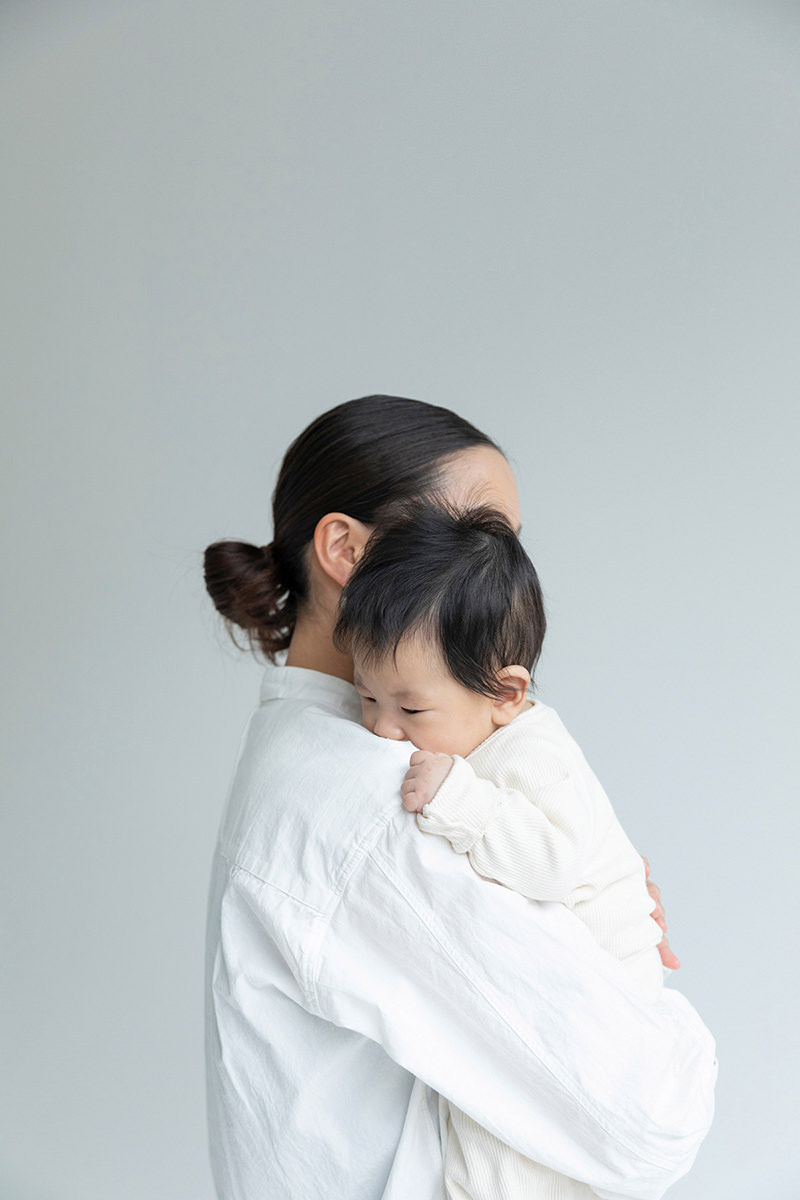
Tsutomu Ogino
A soliloquy in my slumberREAD MORE
Tsutomu Ogino
A soliloquy in my slumber100 days old.
An unprecedented virus pandemic, disasters caused by the climate crisis, once in a four-year world tournament forcefully executed... This child has to live through this world of chaos.
The burden on this small body is heavy and merciless. Thinking about his future, my only wish is for him to live through a happy life, a wish even stronger than my pleasure in seeing him grow up.
All the same, I feel shame for us, adults, who have built such a world.
When he gets older and starts to understand things, will the world be in a better place.
As their elders, what can we do? -
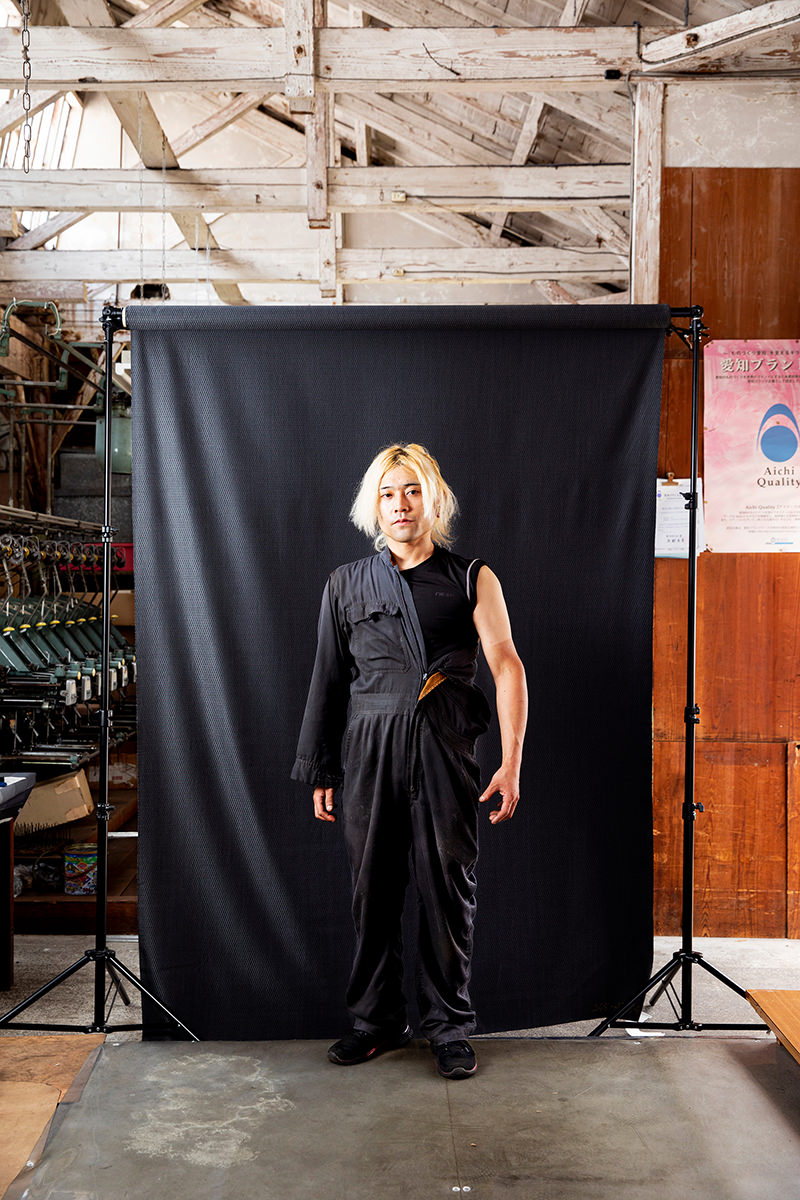
Aya Suematsu Guenier
-The weavers-READ MORE
Aya Suematsu Guenier
-The weavers-“Let me photograph your portrait with the cloth you wove”
Since 2009, I have been photographing artisans and factories from my local textile industry. Situated west of Aichi prefecture, Bishuu stretches over the southern area of Gifu prefecture. The import penetration ratio of the domestic apparel market in 2018 is 97.7%. Yet, there are people who are still producing high-quality fabric in this country. Artisans who have been working with their looms for over 50 years. The 4th president in line has decided to take on the 100 years old business. I have photographed those people: from the head of the factory who, having dropped out from high school, earned his current position in only 10 years, to the technical trainees now essential to Japan. The area had various domestic and international high brands as trading partners but was also affected by COVID-19. Although the factories have lessened, they keep weaving their fabric everyday. -

Mariko Hara
step by stepREAD MORE
Mariko Hara
step by stepAt a new place Through COVID dreams sway reality swept away
Wandering around
Between doubt and hope for the future
Step by step
A portrait of a young man who feels his way for tomorrow -

Ryo Sato
SomedayREAD MORE
Ryo Sato
SomedayWhen I thought about photographing a portrait, one person came to mind; my wife’s uncle. He loved photography and even once suggested how it might be interesting to compose a 4-frame manga with photographs. Due to his severe asthma, we could only shoot when he felt best. He owned a lot of books; I remember seeing a Schiller and a programming introductory textbook from the local library on his desk. When I told him that I liked mountains, he said as we parted that we should go hiking together sometime. That promise is yet to be fulfilled but I believe that it will one day become true.
-
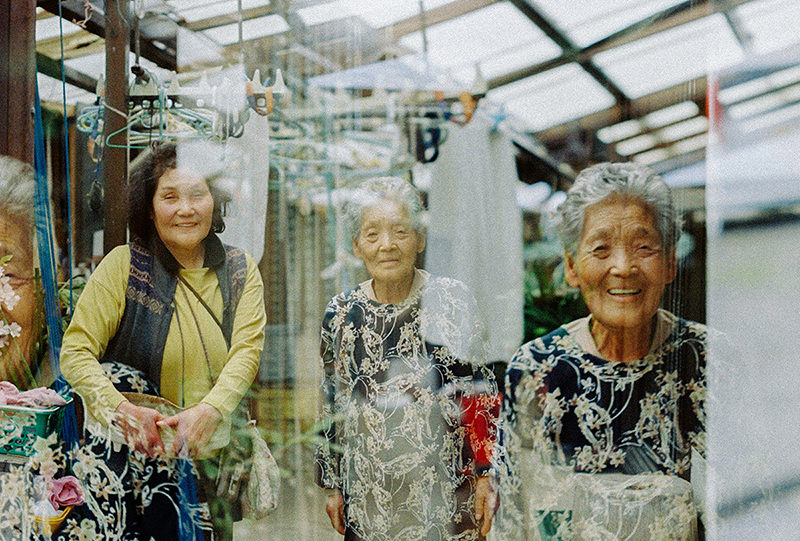
Kazuki Majima
I Think of YouREAD MORE
Kazuki Majima
I Think of YouOne year has passed since I moved to Tokyo for university. The corona crisis made my hometown feel further away than it actually is. Carrying the analogue camera I bought in spring, I met my grandparents for the first time in a while. “How much time do I have left with them”. With this thought in mind, I could not stop photographing them. I had never felt this way until now. Although the images came out to be quite unique as I was still unfamiliar with my film camera, I still love their expressions directed to me, their grandson. The physical distance had greatly changed but the distance at heart was still the same.
-
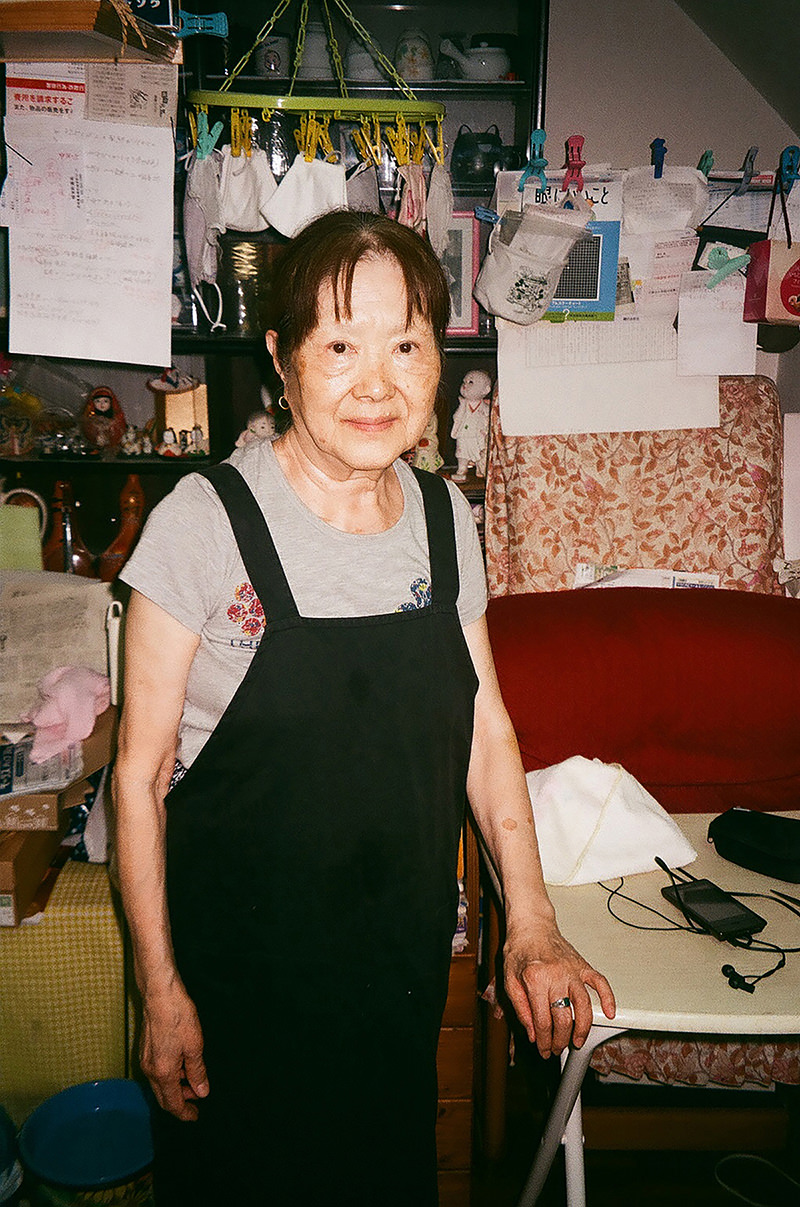
Riku Hisamatsu
Ochi MamaREAD MORE
Riku Hisamatsu
Ochi MamaI call my grandmother “Ochi Mama”.
When I was still a baby, my mother had taught me how to call my grandmother: Ookii (grand) Mama (mother). As I still had difficulties pronouncing words and called her instead, Ochi Mama. Ever since, my grandmother has been Ochi Mama.
One day, I asked her if I could take her picture. She hesitated saying “I look awful, I don’t even have make up on”. But in the end, she accepted if it was just a few photographs. Later on, I took more.
How she offers rice to the family Buddhist altar, how she washes the masks and dries them, how she plays Tamagotchi. Just the fact that she is alive today makes me happy. -

Kenta Karima
moment.READ MORE
Kenta Karima
moment.Ephemerality, the moment, in-between, space, the sound of time.
0.1 millimetre of a certain thing or event brings me joy. You, the person beside, or the lover. Something that would make you get over the wounds of the past, or the memories of a journey from the same time and space.
What would they feel.
The 0.1 millimetre event of a limited lifetime is the theme and concept of this work. -
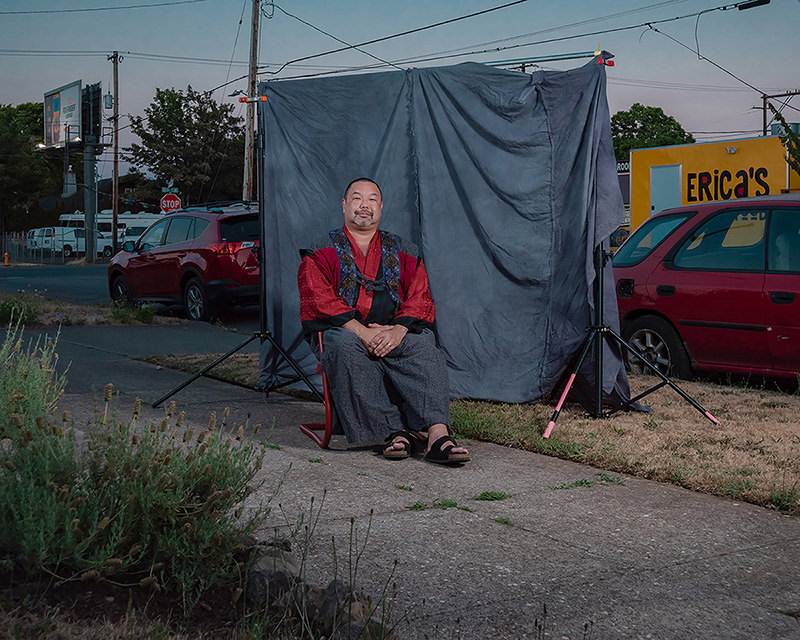
Kris Lattimore
Tommy Jennings, wearing his handmade hakama and kimono, Portland, ORREAD MORE
Kris Lattimore
Tommy Jennings, wearing his handmade hakama and kimono, Portland, ORTommy is a friend of a friend who I had met a few times over the years, a very kind person. I heard of the Portrait of Japan opportunity for the first time about 12 hours before it was closing. History and people have always interested me and I saw this as an opportunity to lean into that interest and to learn something new. I sent a rushed set of texts to friends asking if anyone could sit for me that evening and make a proper portrait. A few hours later I met Tommy at his house, we made I think four total portraits, two of which I liked, in less than an hour. The hakama and kimono were handmade by his mother and are very special to him. I was privileged that he allowed me his time and access to this part of him and his heritage.
-
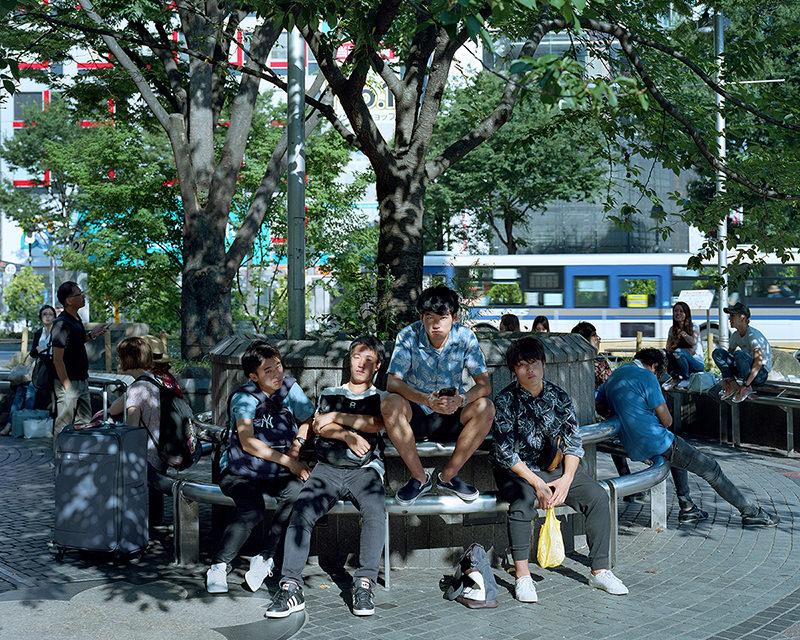
Seitaro Yamada
Sunrise songREAD MORE
Seitaro Yamada
Sunrise songOne moment of a place where emotions constantly intertwine, the serenity in the sunrise. Attracted by this contrast, I started visiting the morning Shibuya. Will the role of cities change because of this pandemic? This project is my way to keep a record of this world that is slowly shifting.
-
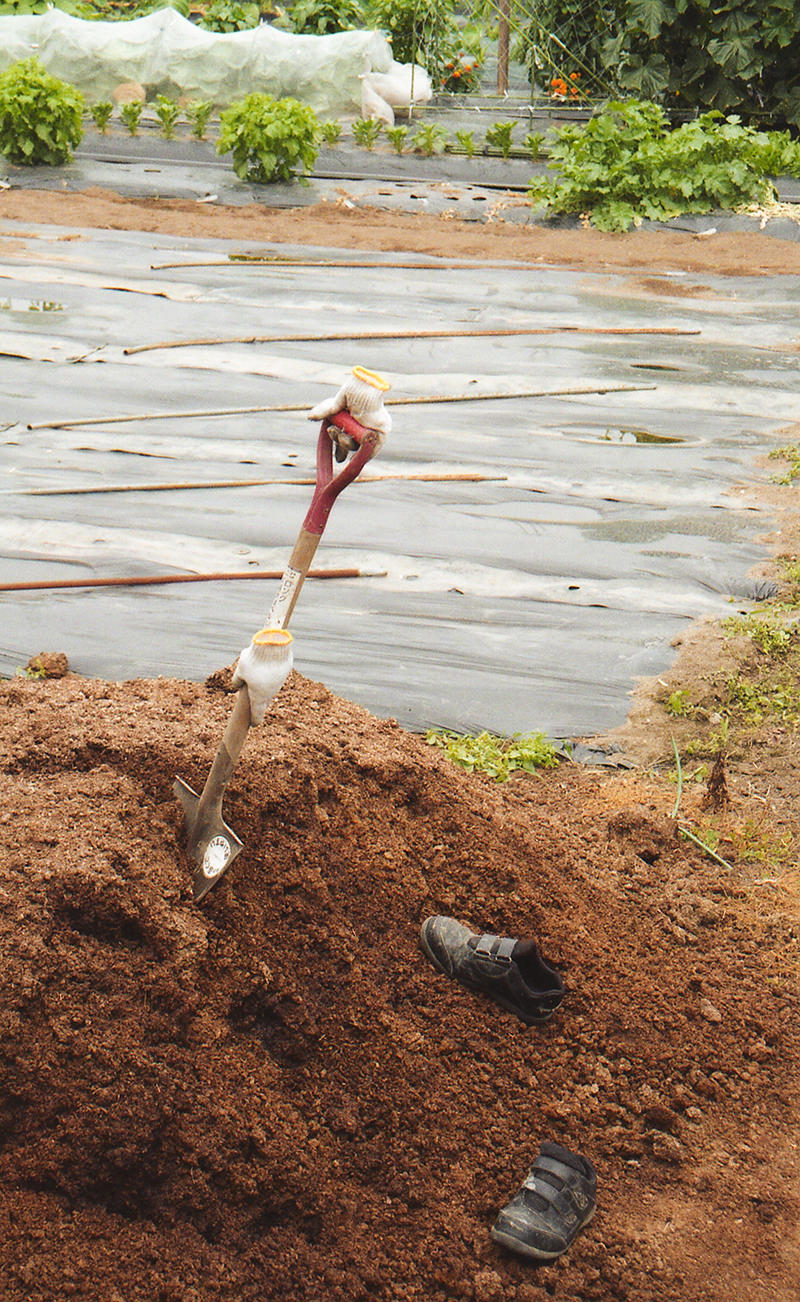
Mao
Modern JapanREAD MORE
Mao
Modern JapanIn Japan, we have the technical intern trainee system, designed to welcome interns from developing countries to acquire skills unavailable back home, in Japanese companies.
However, after further research, it appears that 70% of the hosting businesses are violating the regulations with unlawful overtime and low wages. As such, there are still many problems with this system.
On the other hand, it is true that these foreign trainees are also supporting the Japanese companies who cannot allocate enough employees due to the country's decreasing population. How do these interns appear to the eyes of the Japanese government and host companies? -
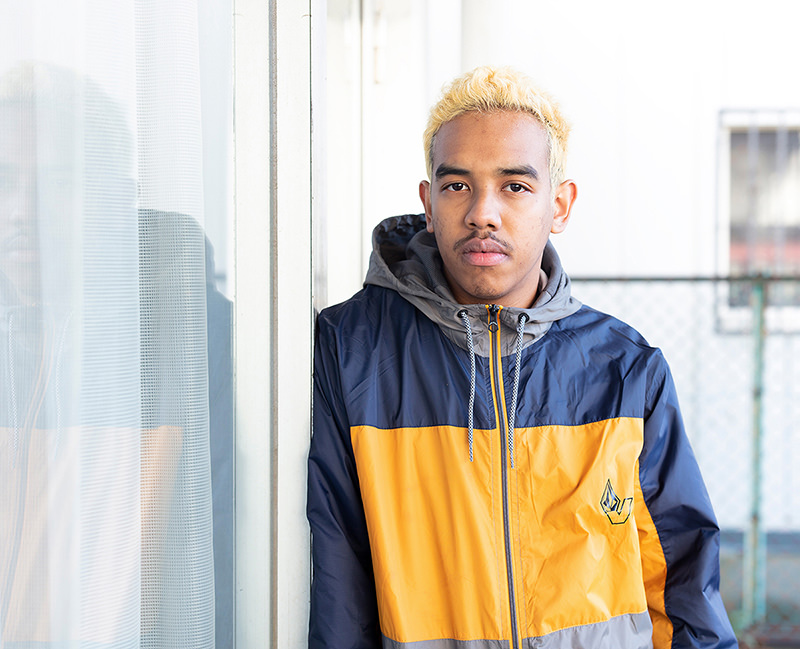
Yasuhiro Sakuma
Standing in the white streamREAD MORE
Yasuhiro Sakuma
Standing in the white streamI started taking portraits of the young in the suburbs of Kanagawa where I started living by coincidence. In 1991, as I was born after the economic bubble burst in Japan, I felt sympathy for the fluctuating moods of those who grew up during this long term economic stagnation, when it was difficult to draw a life map with a bright future. At the borders of Tokyo and Kanagawa, flows the Tama river. Looking over as I cross the river, I felt a similar attraction to this flow, just like how it offers me a different impression every time, and the youth of the city. Humans and the river both lives on the same timescale and each owns a wavering life. Past/Present, Self/Others, Central/Suburbs, Dream (Image)/Reality. The unnamed waterway, unclear of which section divided by words and body it belongs to, just like the shadows of the fish rippling on the surface of the Tama river, our existence keeps swaying.
-
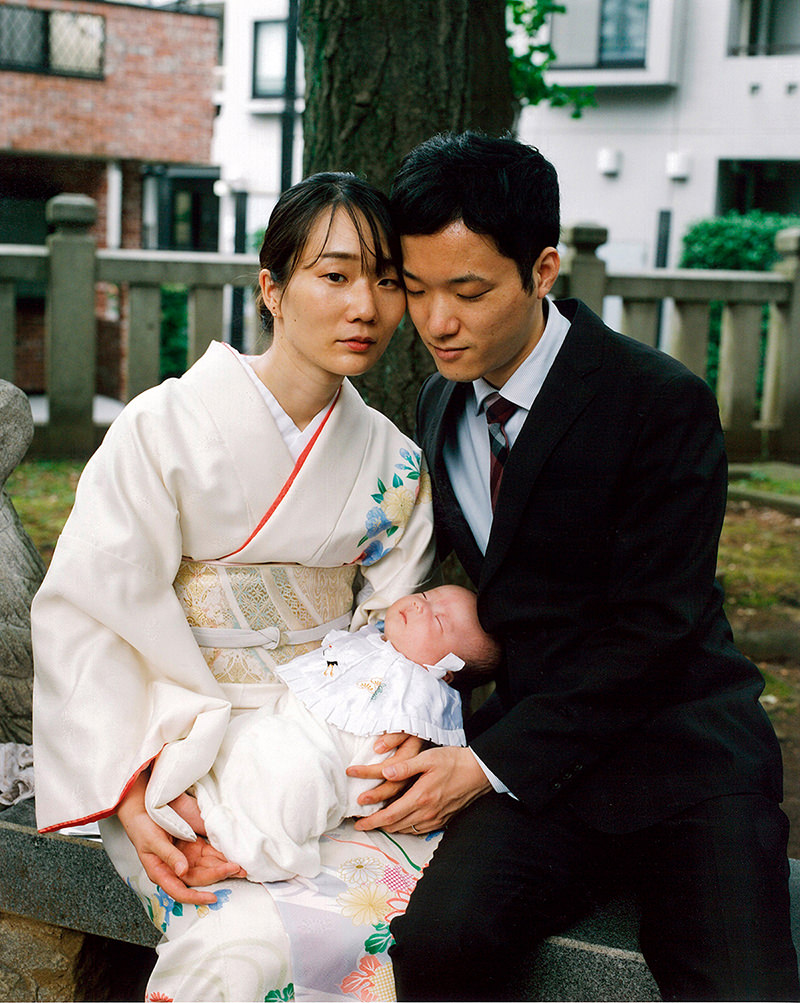
Yuta Fuchikami
PARKREAD MORE
Yuta Fuchikami
PARKA painter is painting from morning to dusk in a park. A self-portrait, unbelievably ugly. I’m only interested in humans. Humans look hideous yet are beautiful. You see, there are many people in the park. That’s why he paints in the park, looking at people. My photographs are the same. I was interested because I was scared of them. Walk on the streets, talk to strangers, photograph them. The people in the pictures might be your self-portrait.
-

Wataru Takahashi
A Responsive GazeREAD MORE
Wataru Takahashi
A Responsive GazeWhenever I hear or speak the word, “Diversity”, I am questioned if I have that spirit. I understand it in my head but if I meet somebody by coincidence, how will my body react, how will we talk. How will I face my other self which will outline itself for the first time when meeting that person. At that point, the virtue composed and categorised outside of my consciousness means nothing. I cannot stand against it with fine-sounding talk. Photography is the way I can continuously attempt to make connections and internalise this spirit. Being aware of the boundaries, with a strong yet flexible sight, to accept an unknown world.
-

Lin Shihyen
Self In Glass -
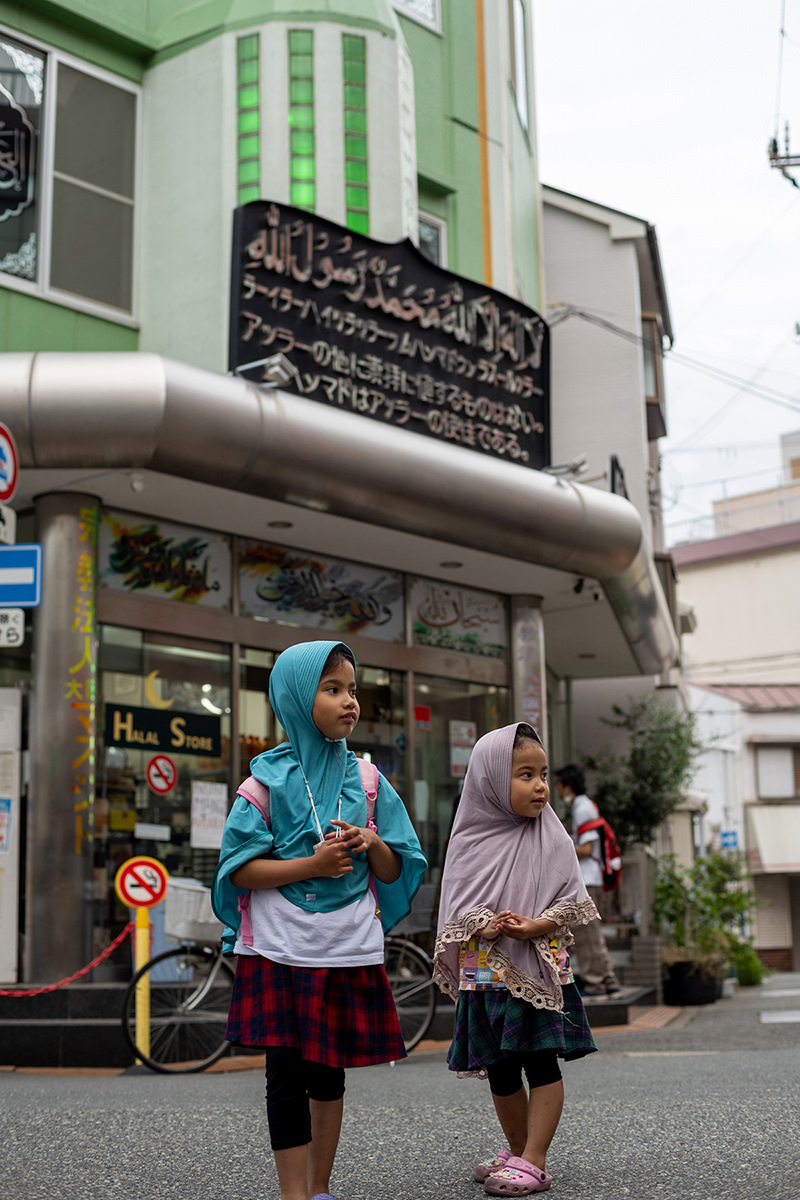
Yusuke Hishida
NISHIYODO-STANREAD MORE
Yusuke Hishida
NISHIYODO-STAN15 minutes away by train from central Osaka. You start to hear the adhan from the neighbourhoods along the river. Invited by the same sound I heard once in the Middle East, I stepped into the building. There, men have just started their prayer in the direction of Mekkah. The air is crisp and makes me forget that I am in a Japanese neighbourhood. In consideration of the prohibited worship of an icon, all the faces in the newspaper ads introducing the town are covered with stickers.
This town in the Nishi Yodogawa district of Osaka has been called Nishiyodostan for as long as I can remember. Housewives walk past long-bearded men, with convenience store’s plastic bags in hand.
How does this scenery relate to the future of Japan? It is said that the Muslim population is to surpass that of Buddism and Christianity mid-century. -
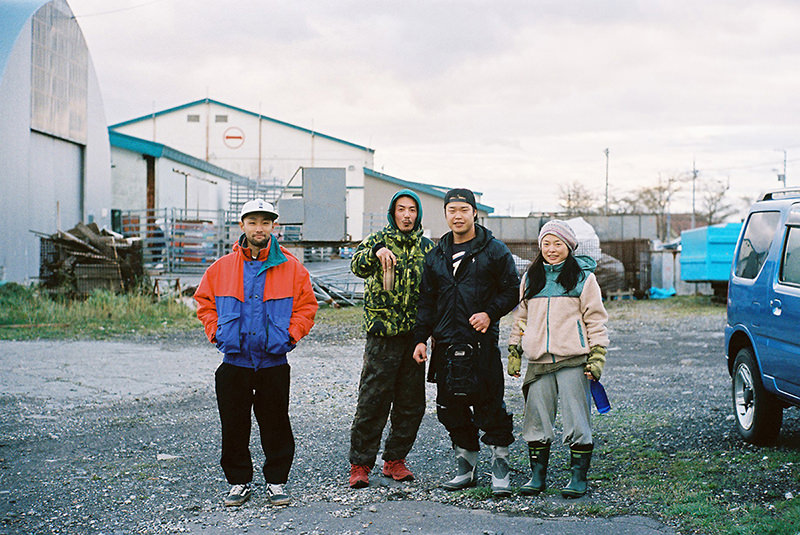
Yu Okumura
MIGRATORY BIRDSREAD MORE
Yu Okumura
MIGRATORY BIRDSI spent my study years in Tokyo and went to an average university. Seeing my seniors quitting their jobs after 2, 3 years, a position they yearned for applying to dozens of jobs; lifeless expressions in the train on my way to school; the people around me with their lives set in front of them. I thought, there has to be more to life than this. I decided to live as one of the seasonal workers around the country, just like a migratory bird. Living together, I learnt that you can live with strength, regardless of what you do, that you can live as you choose. I spent my time with them, cherishing the feelings you gain when you position yourself in nature.
-
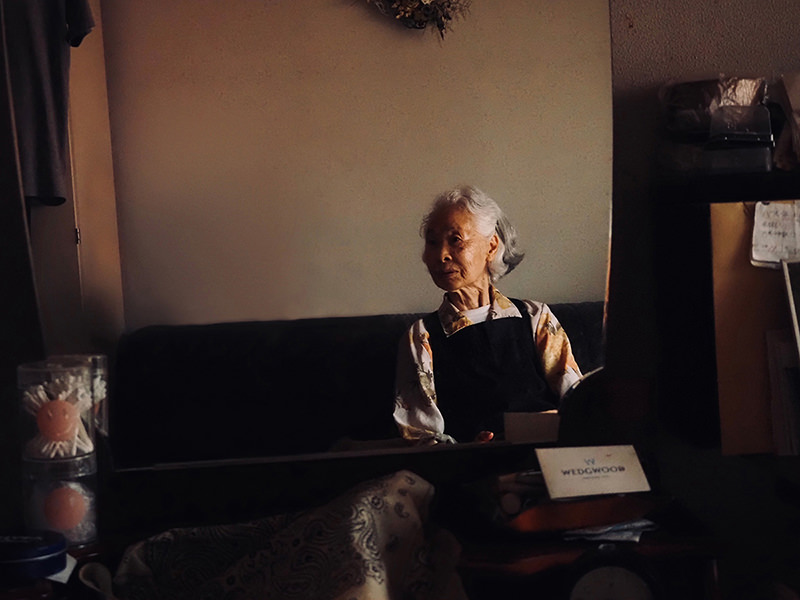
Takanori Ikeura
KyokoREAD MORE
Takanori Ikeura
KyokoMy grandmother just turned 94. She became even more beautiful recently.
-
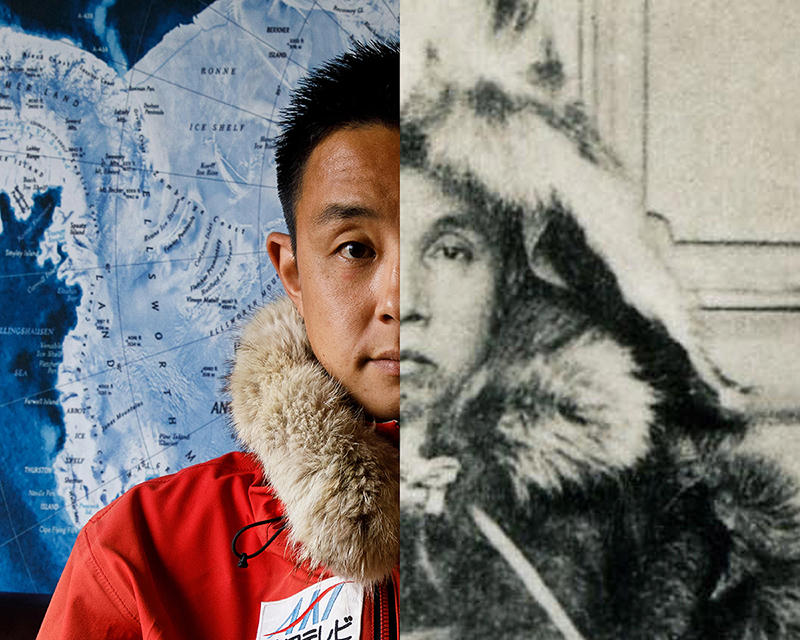
Kouta Takahashi
80°05′READ MORE
Kouta Takahashi
80°05′Nobu Shirase, a Japanese explorer who headed for the South pole with dog sleds in 1912 but were forced to retire at latitude 80°05′S. And Masatatsu Abe, another Japanese explorer who has opened new routes from that same point, heading for the attainment of the South pole on his own by foot. One dream carried over for 100 years. What on earth makes them want to go explore the unknown?
-
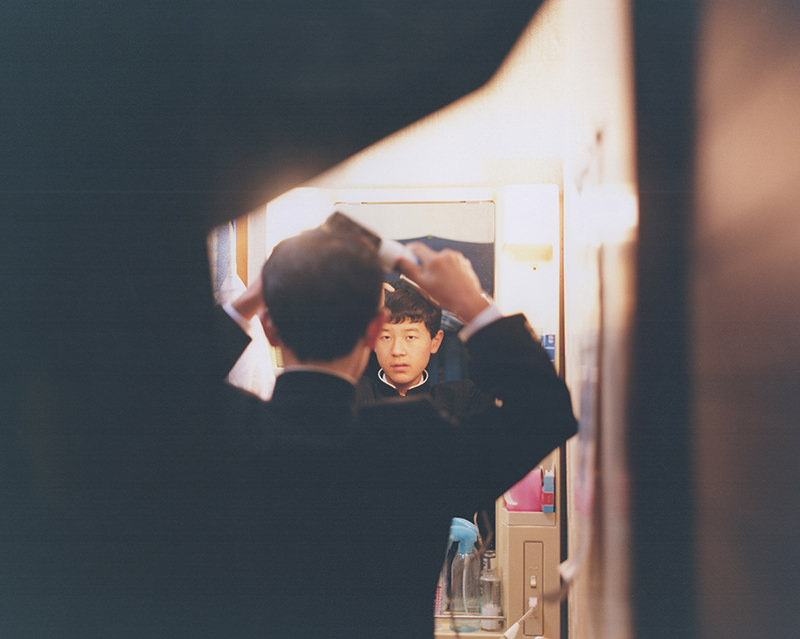
Jun Michisaki
In The Mornings And One MorningREAD MORE
Jun Michisaki
In The Mornings And One MorningThis must be a morning just like any others, nothing special. Yet for me, it was a fresh and lovely time. Kazuki was supposed to be sleeping next to me but he had already changed his clothes. Reina was watching a TVshow she recorded until the last minute. Ryo went to school with his hat on. They were probably embarrassed. But thank you.
-
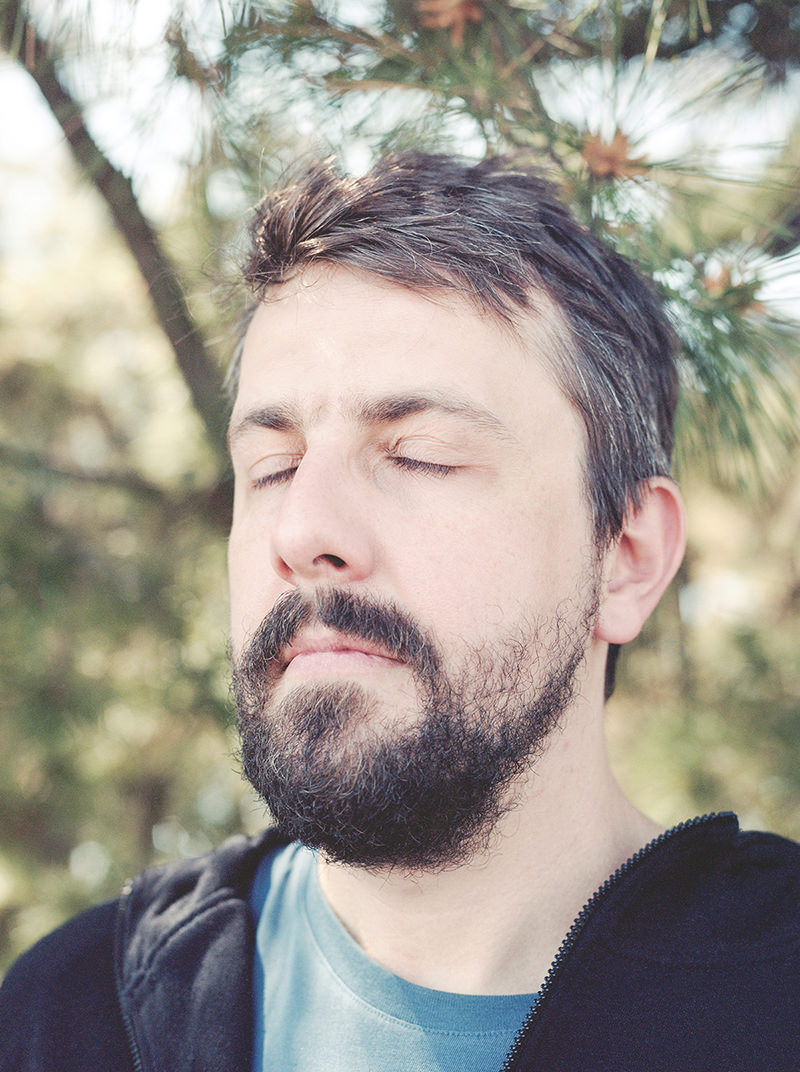
Dorothée Nowak
The silence in-betweenREAD MORE
Dorothée Nowak
The silence in-betweenI am a French citizen living with my family in the Japanese countryside. Before the pandemic started, I always thought that having a mixed family, living far away from home, from my family and friends, was ok as I could visit them anytime. By 2020, this became almost a burden. "The silence in-between" is about the slow-life and the waiting time since I and my 2 years old daughter will be able to see our loved ones again: people who could visit just before Japan closed its borders or people living in another prefecture.
-
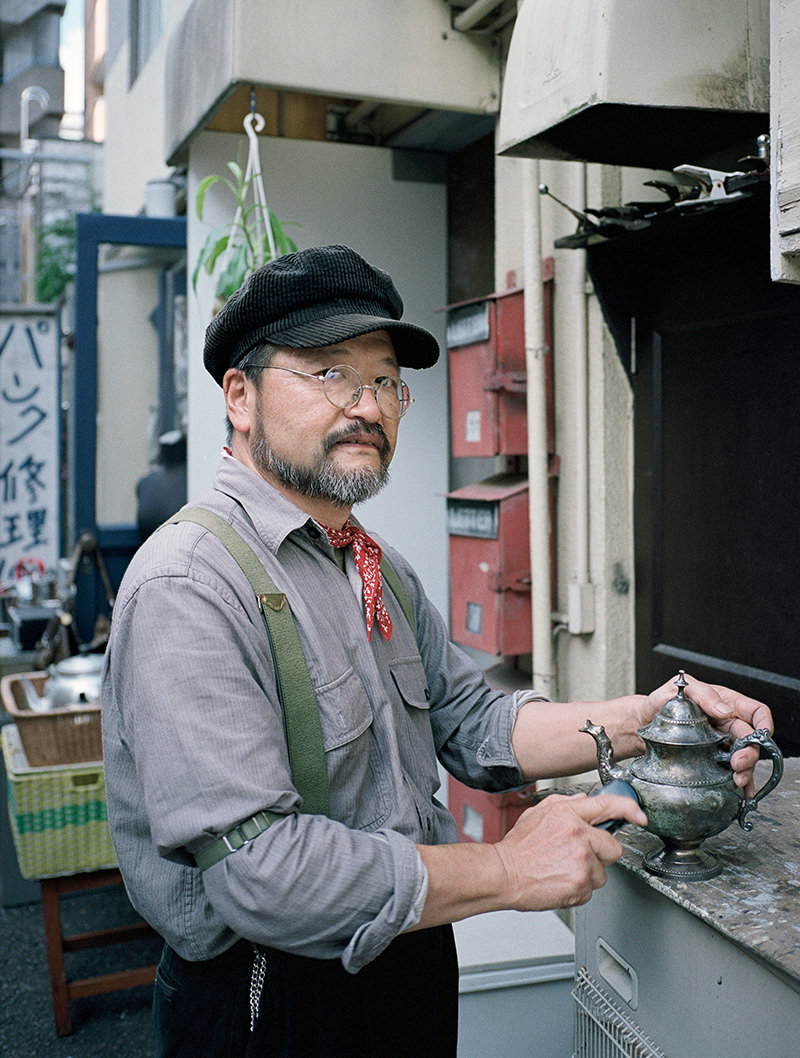
Denya
A Fun People-WatchingREAD MORE
Denya
A Fun People-Watching3 years ago, I came to Japan from China. Everyday, I went to a Japanese language school, I didn’t have any Japanese friends and I didn’t have the courage to speak Japanese either. I started my studies at the photography school I wanted to go to, and decided to change my lifestyle. I talked to a stranger in Tenjin, Fukuoka and got permission to photograph him. I connected with him on Line, showed him the picture and we became friends. I’m glad that I was able to learn about this town by taking photos of strangers.
-

Junko Akita
Youth in PandemicREAD MORE
Junko Akita
Youth in PandemicThis is a part of on-going portrait series of youth who were stranded by the current covid-19 pandemic.
My son, who is 14 years old, and his social and psychological states during the year are direct causes for me to create this series. There have been negative reports on psychological effects on the youth, like stress, anxiety, depression and so forth. This triggered me to investigate how my son, his friends and cousins and teenagers of his age were doing during the pandemic with portraits and interviews. -
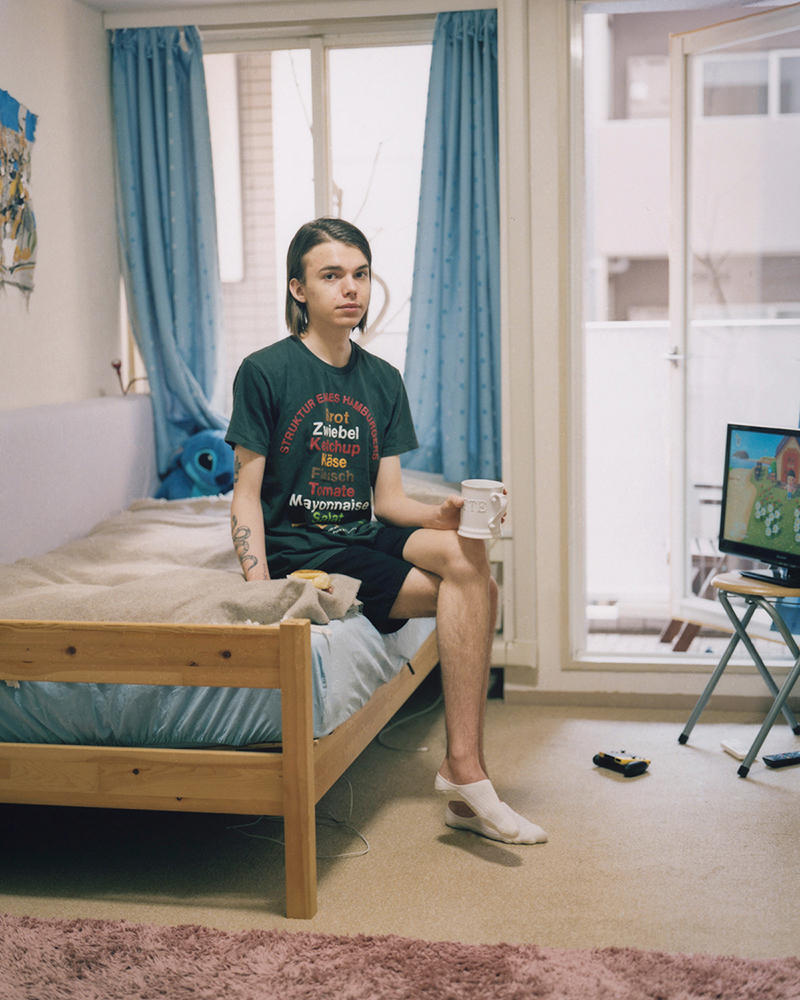
Tetsuo Kashiwada
1 roomREAD MORE
Tetsuo Kashiwada
1 roomInternational students who came to Japan with hopes and dreams. In a small 1-room apartment, what do they feel?
-
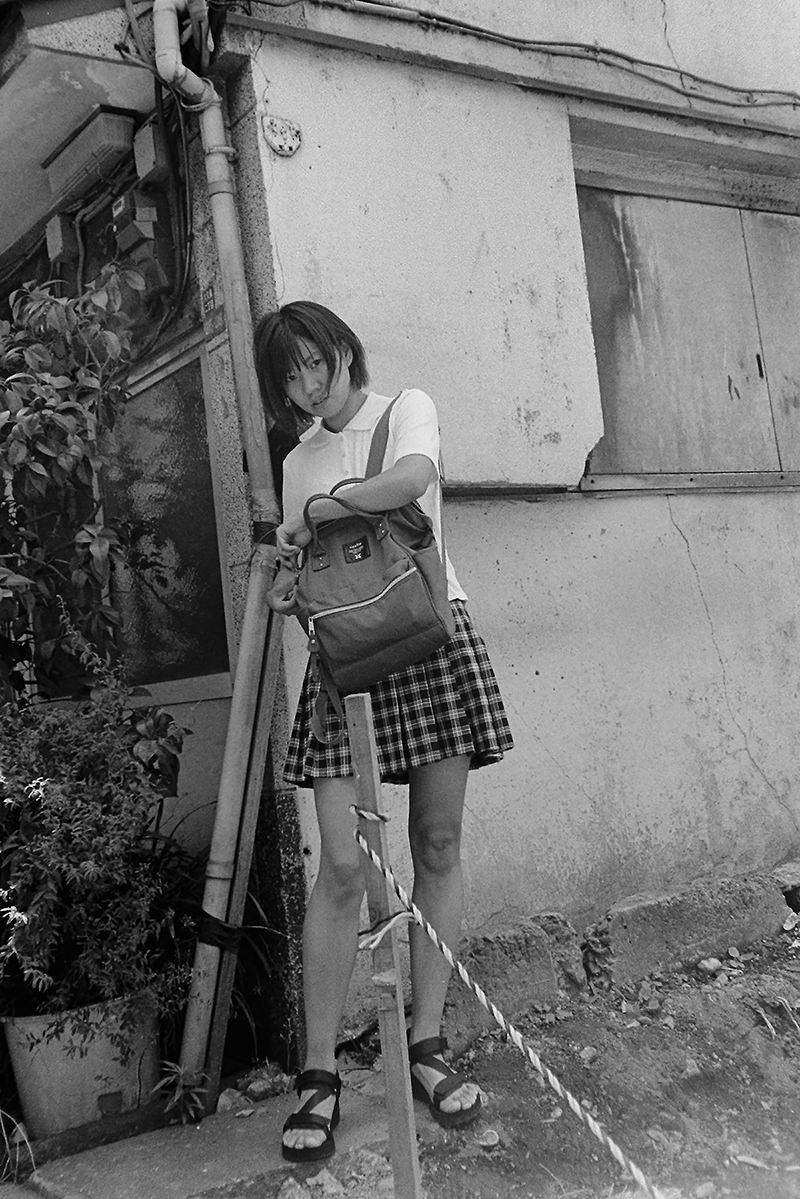
Li he
The Wind RisesREAD MORE
Li he
The Wind RisesShe loves nature and freedom but her Tokyo life buries her like a net. Looking around at the exhausted Japanese and foreigners, our existence seems like stones in a rough wave taking us offshore.
Moving to Tano in Kouchi prefecture relaxed our tired hearts. Us humans, we lived up to today after overcoming uncountable hardships; why do we get more and more tired as we continue living. Japan has a developed economy and is leading the world today in many aspects. However, the souls of people are dying. Of course, that’s not just in Japan. In many cases, Tokyo seems black and white, just like my photographs. We need living warmth in the human world, not just material strength. -
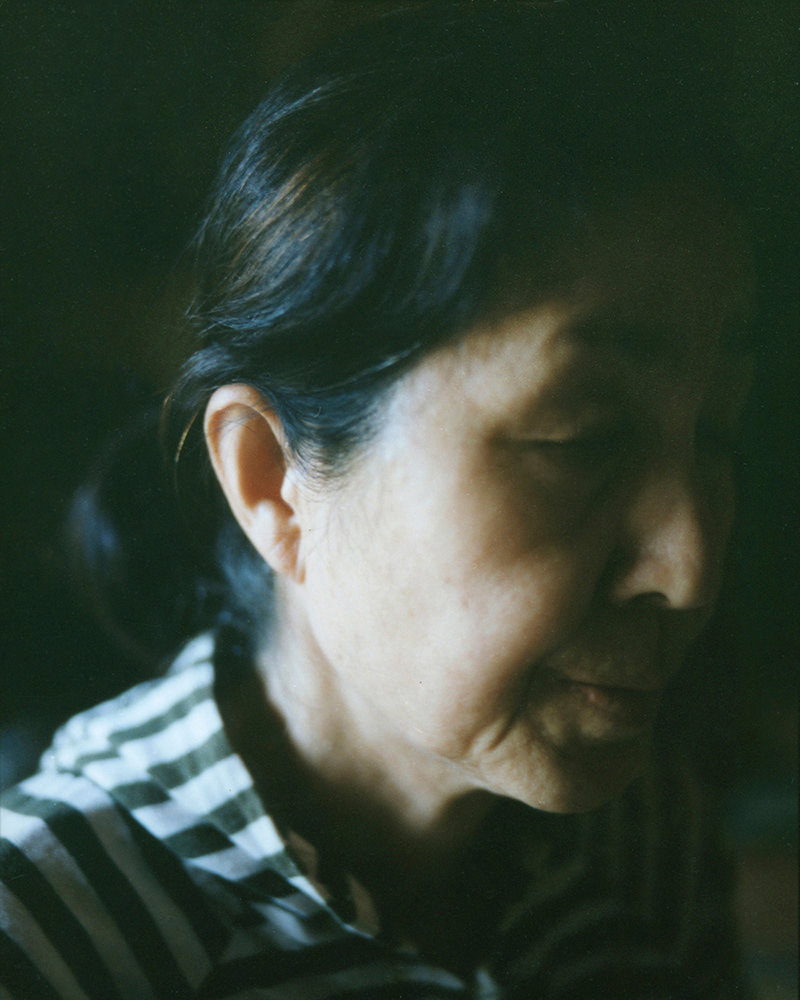
Tetsuo Kashiwada
MotherREAD MORE
Tetsuo Kashiwada
MotherI can only meet my mother who lives in the countryside of Shiga in a year.
A child who used to stick to her mother every day when she was little has now grown up over time.
Every time she returns to Shiga and meets her mother, she feels her mother aging.
I wanted to take a picture of her mother. -

Kazunari Yatera
BoyREAD MORE
Kazunari Yatera
BoyThis past year, COVID-19 crisis has forced us to alter our lifestyle; many were confused and hurt. Then, what about the children? I captured their everyday, getting on with their lives despite the changes in the world.
-
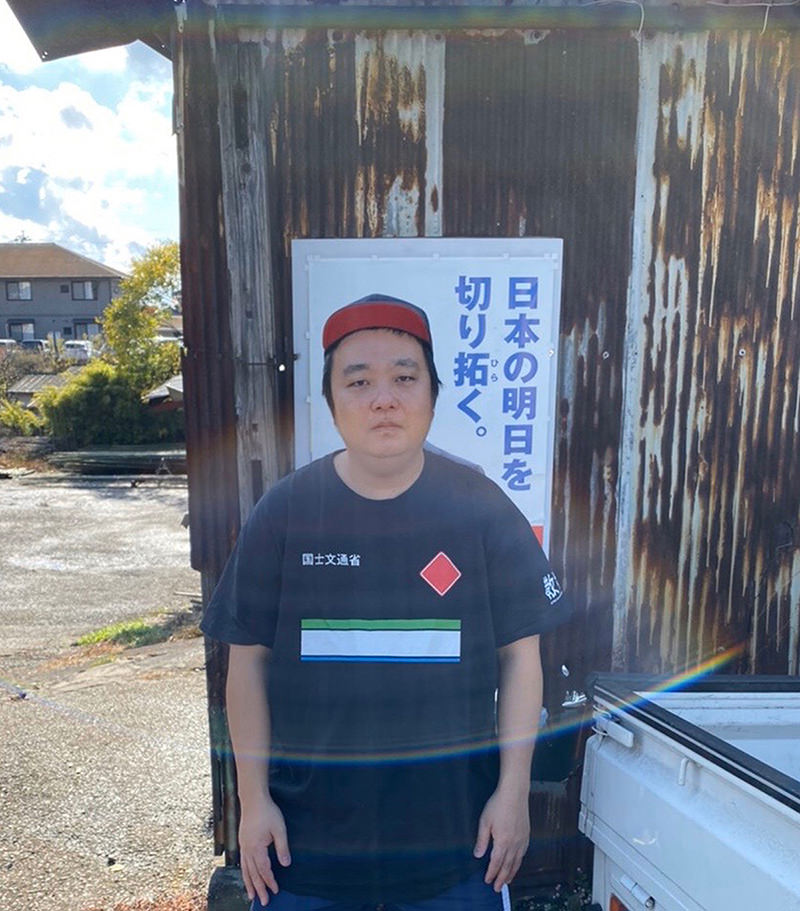
Masashi Inokuchi
Probaganda HeroREAD MORE
Masashi Inokuchi
Probaganda HeroWe call the activity we have led as fieldwork, Kokushi Buntuu Sho (Department of Patriotic Correspondence). This is a movement that posts images of knowledge and skills gained as a town-watching group on social media. As an example, we have “Kao Hame (Face Fitting)”, a self-portrait performance taking photographs by meticulously fitting one’s face in advertisements and political campaign posters. By having these lifeless citizens bear the lambent slogans with political principles, they express their lack of interest and trust in politics. Having said so, it actually does not have any meaning and is just a simple prank. The artist himself occasionally notices possible intentions and purposes yet, it always makes more sense calling it a joke.